
19 June 2021
Note: this is a very long blog so you may wish to skip to the video. For the video, click here. Warning: this is a gigabyte video so it takes a while to load!
Only if you’ve lived in a very small town can you appreciate the enticement and energy of a fairly large city. Don’t get me wrong, I think growing up in a small town was beneficial – to me. However, I assume almost every kid wants to get out of their “hick” town for the bright lights of any city. My first big city experience was Meridian, Mississippi, at one time the largest population-wise in the state. I was just too young to get excited about it. My next experience was the capital city of Jackson.
I probably have better knowledge of Jackson than any other city with the exception of one. Every year there was the State Fair. Our Boy Scout troop ushered at the football games at the Jackson Memorial Stadium (now Mississippi Veterans Memorial Stadium). We did Scout Expos at the fairgrounds. I lived in the city twice in my life – once in the 7th grade and once while in graduate school at the medical center. Ruby, my grandmother, took me to movies at the Paramount and Lamar theaters and restaurants like in the one in the Heidelburg Hotel every other Sunday and our Scout troop learned to live off Crystal hamburgers on Capitol Street.
When I was a counselor at Camp Kickapoo in Clinton, our “days” off were often spent at the Shoney’s at Westland Plaza on Ellis Avenue. A couple of nights our group almost got into some fights with local high school boys.
I rode my first escalator in a Sears & Roebuck (both names were used back then) on North State Street. I was scared to death the thing would eat my feet. It was really hard to pass the roasted nut kiosk right by the escalator on the first floor without drooling.
New Orleans probably holds as many memories for me as Jackson – my first Mardi Gras, my second Mardi Gras, my third Mardi Gras and even my fourth Mardi Gras (I was stationed for two of those at Communications Station New Orleans at Belle Chase and for one while aboard dry dock in New Orleans aboard the CGC Reliance). The first Mardi Gras was by choice. NOLA was also the site of my first hurricane from Pat O’Briens – and many more. I’ve returned to the city again and again enjoying its food, its nightlife, and the smell from the Godchaux Sugar company near the Vieux Carré.
You can’t beat the Shrimp Arnaud at Arnaud’s, Oysters Rockefeller at Antoinnes, Bananas Foster at Brennans, beignets at Cafe du Monde, and anything at The Court of Two Sisters. The city has, hands down, some of the best cuisine in the world all within a few blocks of the French Quarter.
As I got draft age, I was sent to Alameda, California for Coast Guard boot camp and then New York, New York for radio school. I never found much attraction to Alameda and New York was wonderful albeit smelly. Don’t get me wrong, I enjoyed free broadway shows compliments of the USO and getting to leave Manhattan every night to go back to base at Governors Island and away from the madness. Times Square was very, very iffy back in the 70’s.
I’ve seen cities in Canada (Edmonton and Calgary), in Mexico (Vera Cruz – and that’s another story), and Freeport in the Bahamas. In Europe, I’ve seen London, Edinburgh, Amsterdam, Brussels, Madrid, Seville, and, of course, Paris. And Paris. And Paris. I would still love to see Paris again.
But of all the cities this small town boy has been exposed to, I love San Francisco the most.
My first exposure to the city was in 1970 when granted leave from boot camp. We had to wear our dress blues and we stuck out like a sore thumb, particularly since this was the time when military personnel weren’t looked upon too fondly. Fortunately, the Coastie uniform of that period made us look like foreign military so we were treated very nicely, particularly by the single women in bars. My first views of the city were from the Oakland Bay Bridge and I knew I needed to get back there sometime. Little did I know that it would be some 37 or more years before I got the chance.
I returned to attend the National Education Association Representative Assembly (the largest in the world) in San Francisco in 1997 as a delegate from the United Faculty of Florida, my college union. I think, unbeknownst to the NEA, it was also Gay Pride week. I saw my first gay pride parade that year.
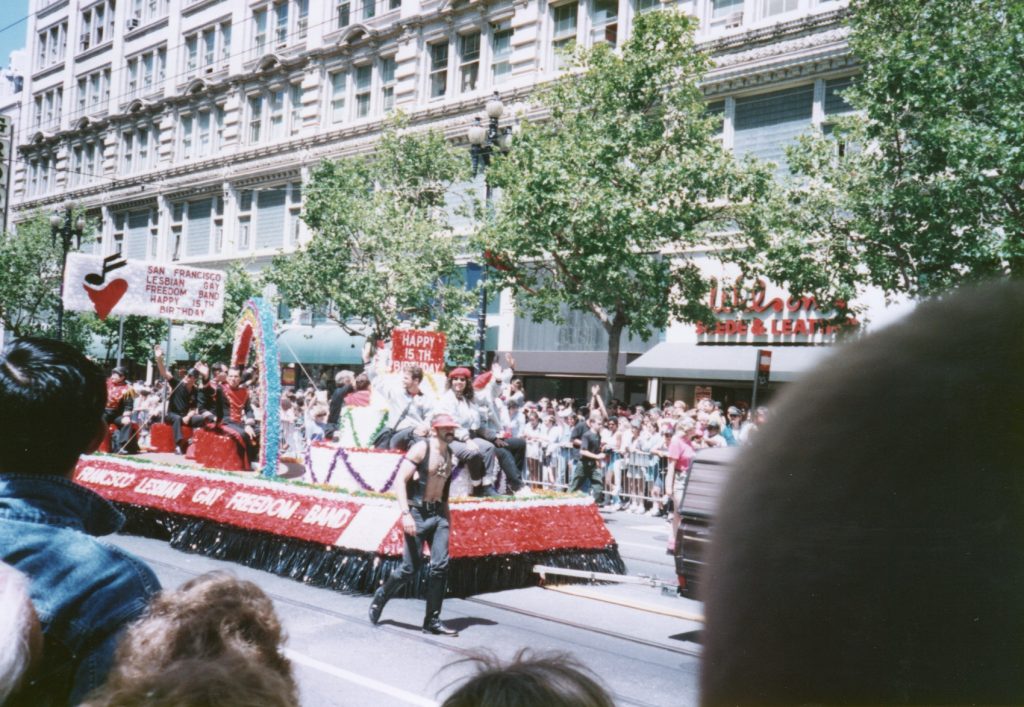
The parade was down Market Street and passed right in front of our hotel.
It was also my first visit to the Castro. I had heard and read about the Castro and had always wanted to visit. San Francisco can be confusing at first, but all you had to do is remember where everything is in relation to Market Street. Even locals give directions like “south of Market” or “north of Market.” Market Street runs southwest to northeast through the heart of the city. The Castro district is in the southwest section, immediately off Market Street.
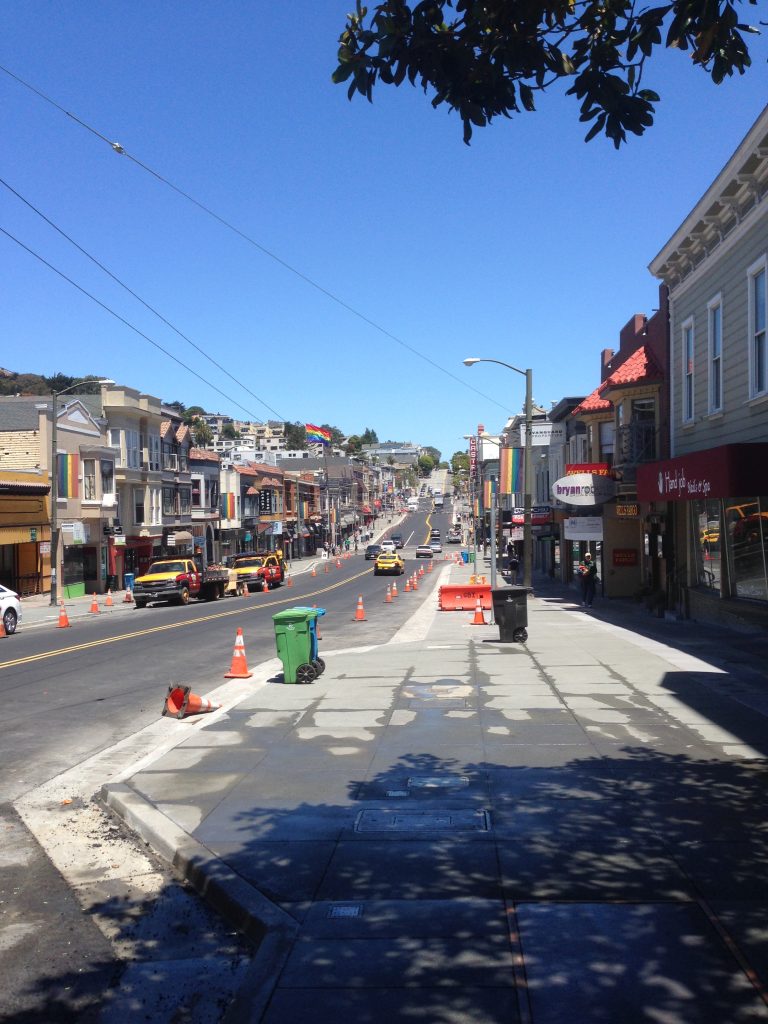
The Castro has been the hub of the gay community in San Francisco for many years. The area was originally name Eureka Valley and had ranchos run by Mexican barons by the name of Castro and Noe. Later, it was the site of settlement of Germans and Scandinavians. In the 1950’s when many people left for the suburbs, gays began to move into the area attracted by the Victorian houses.
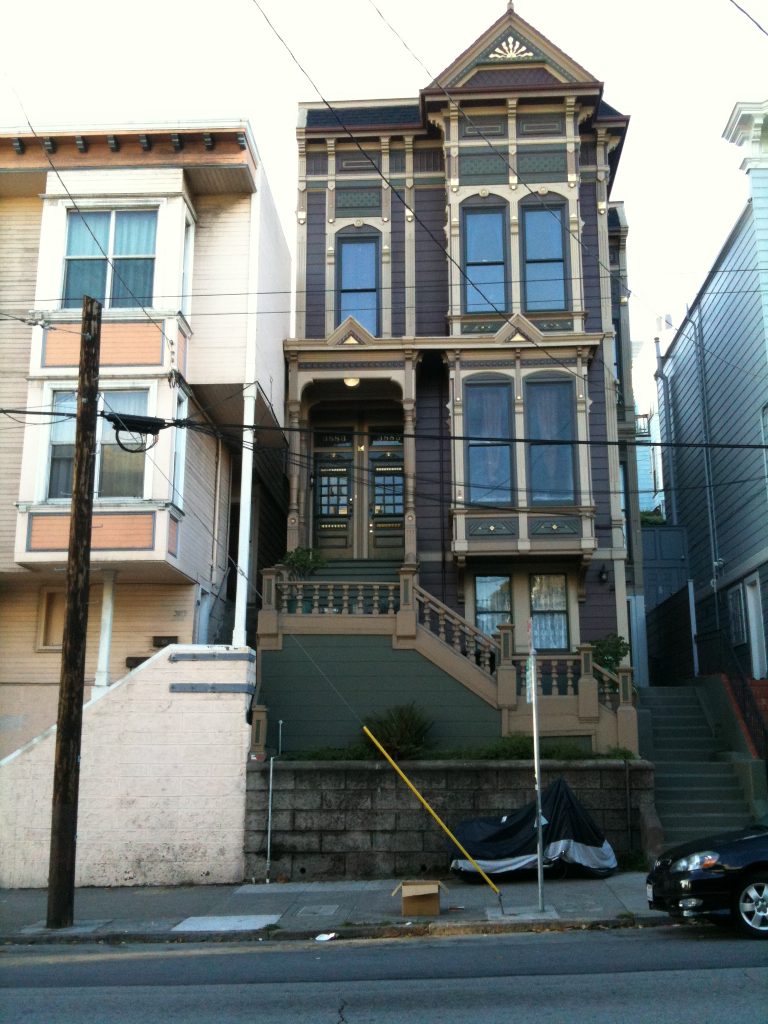
I made my first visit to the Castro on my first day at the NEA Representative Assembly in San Francisco in 1997.
Later in the week, I remember a bunch of us Broward College delegates had the afternoon off and Tom Green wanted to visit Mission Delores (the oldest surviving structure in San Francisco). After touring the mission, several of us wanted to walk around a bit more and I think everyone was a little surprised when I suggested we head to the Castro. Tom especially.
The Castro has so many historical places. One significant place is Harvey Milk’s old photography shop. He was a photographer before he became a gay activist.
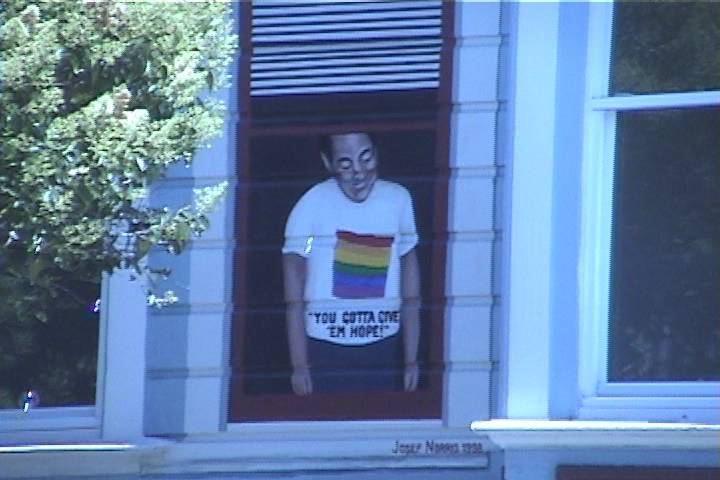
There are two other landmarks in the Castro that pretty much defy destruction: the Castro Theater and Twin Peaks Bar.
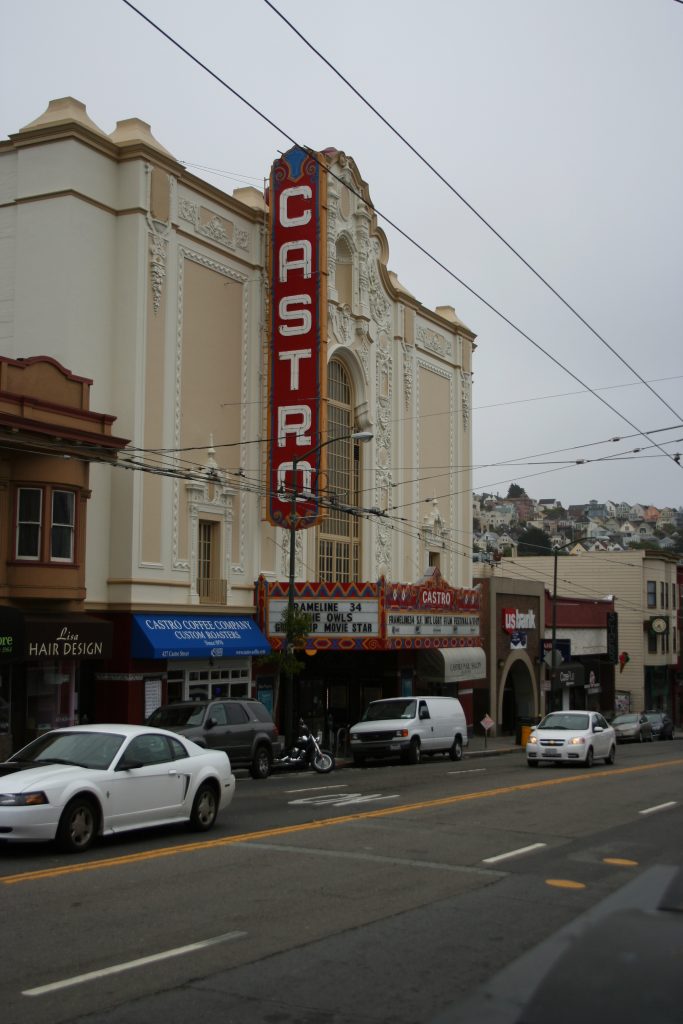
I’ve only been in the theater once and that was with a walking tour of the Castro conducted by an expat Mississippian. The interior had been renovated and it reminded me of many of the ornate theaters in New Orleans.
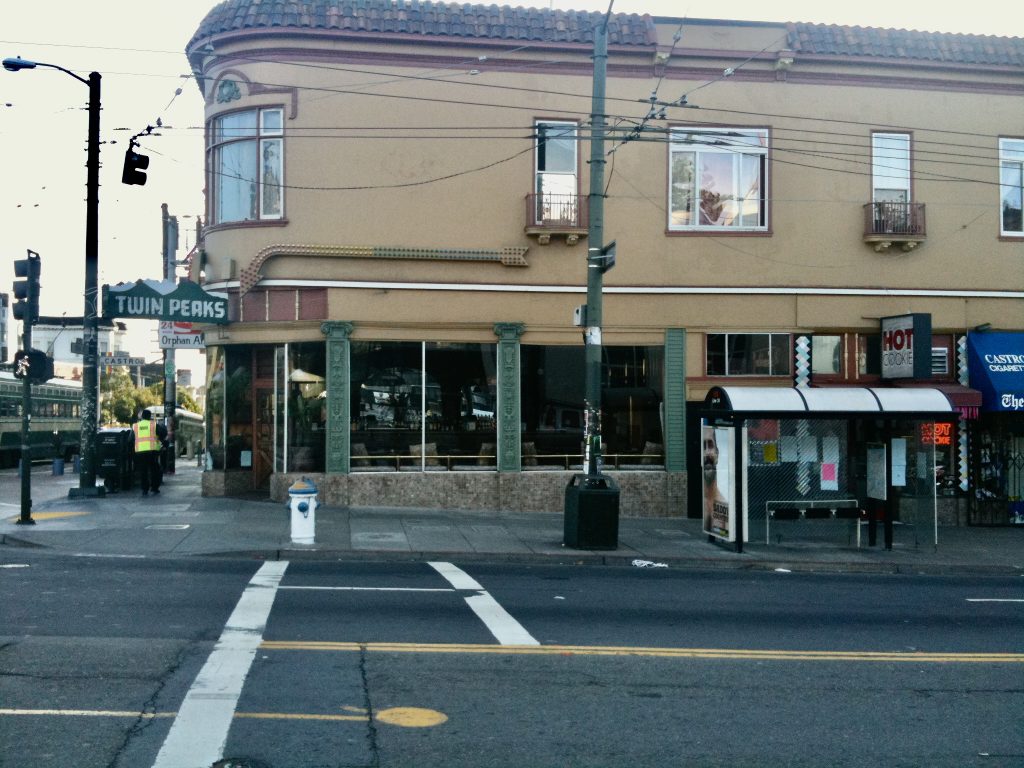
There are several things significant about Twin Peaks. It’s named for the twin mountain peaks southwest of the bar. The peaks are famous for the Sutro tower landmark. The bar is currently owned by a lesbian couple yet it is most often occupied by gay men.
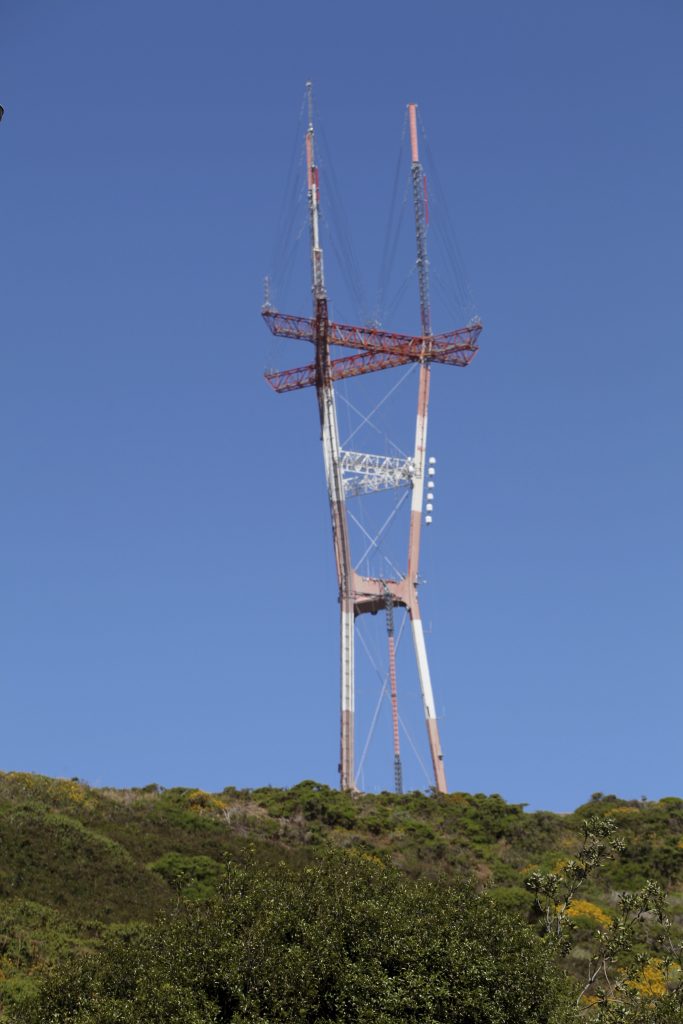
The bar has windows that open up to Castro and 17th Street and that was very unusual for a gay bar back in the day. Most gay bars were totally enclosed so no one could see into the bar and identify the patrons.
It started out as a bar and cigar shop in 1883, converted over the years into different store fronts and back into a bar in 1935. It finally was purchased and turned into its current iteration in 1971. It was the first gay bar in the city (and probably the country) that you could see into the bar.
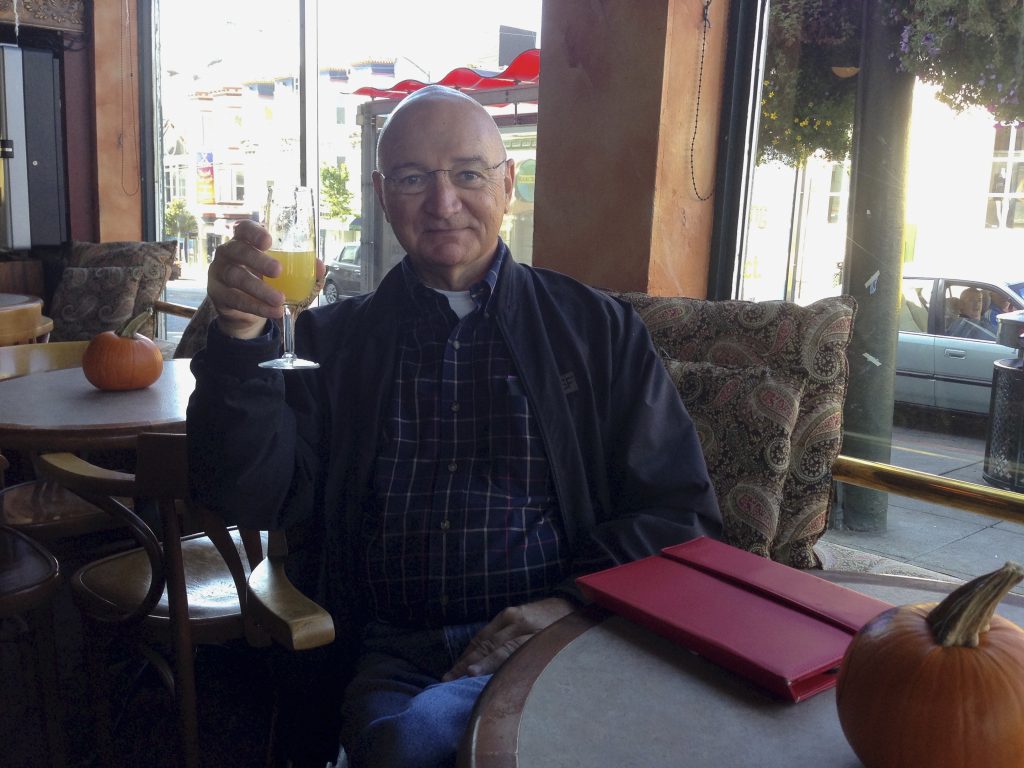
Every visit to San Francisco I make a pilgrimage to the Twin Peaks and have a drink. It was were I met Tom and Burt at the urging of Nancy. Burt always came into the bar with a bag of candy that he distributed to the patrons. Tom owned a rival bar on Market and 17th but he loved Twin Peaks as much as Burt (who owned his own gay bar).
You can sit at the bar and people watch for hours and you’d be surprised and was passes the windows. The bar itself is massive. It was either built on site or they built the building around it. It’s one of the most ornate bars I’ve ever seen. It reminds me of something out of Bavaria – perhaps significantly so since early non-Hispanic settlers to the area were German.
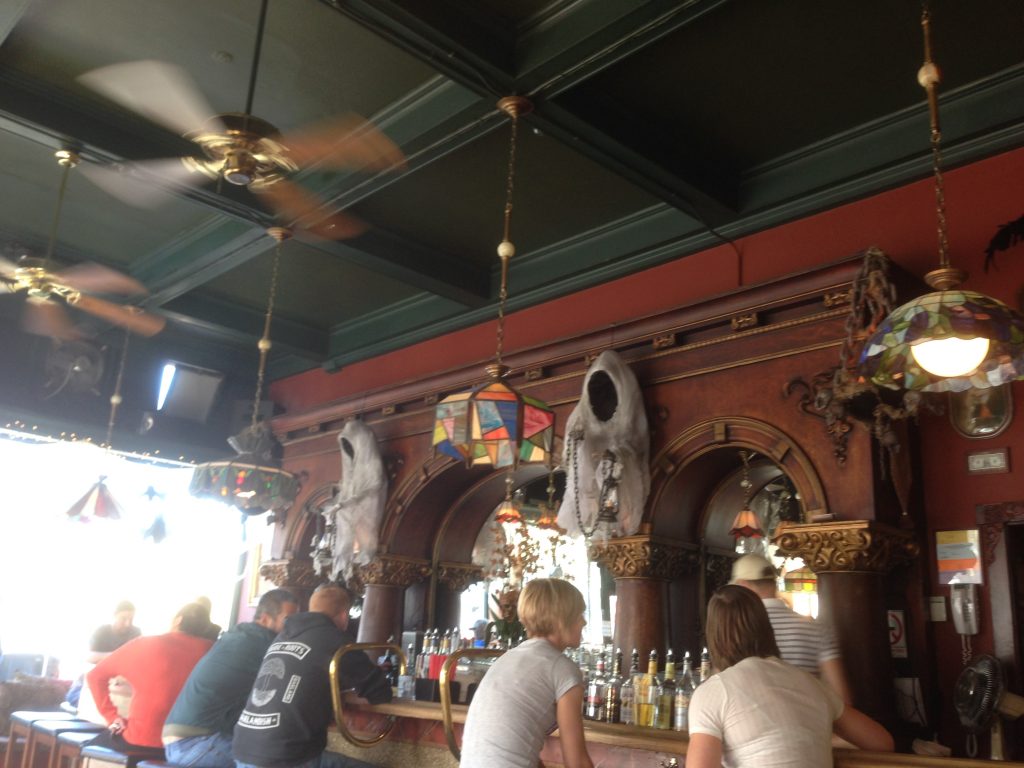
That same first visit in 1997 was also the year that I discovered I liked opera. I had seen televised productions from The Met in New York but back then sound quality was mono and television quality was iffy. I saw “Madama Butterfly” in Jackson in the 80’s but was not impressed. I had the afternoon off from the NEA conference and walked past an imposing building. I wanted to know what it was. It was the War Memorial Building, home of the San Francisco Opera. I walked into the ticket office and asked if there were any tickets available for that night. The opera was “Rigoletto.”
I was blown away by the male and female leads whose voices were a perfect match. I was hooked. By my count, I’ve seen 44 operas at the War Memorial.
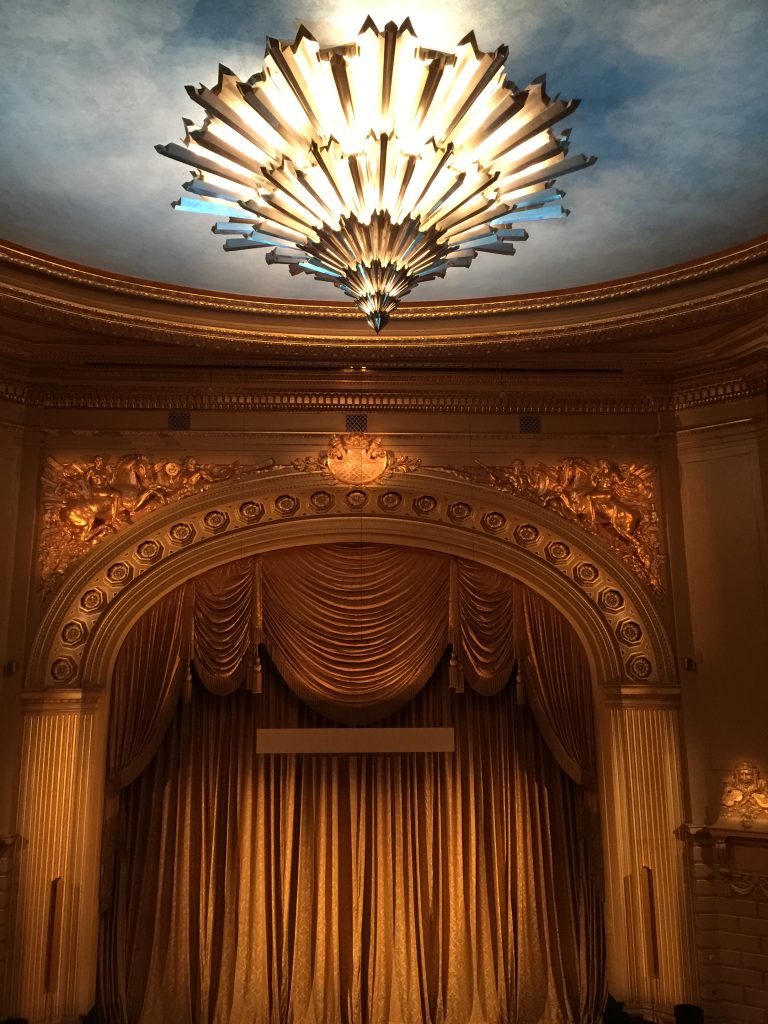
I eventually got season tickets and would fly out every summer for a series of three operas. As a season ticket holder, I was afforded some amenities, one of which was a tour of the back of the opera house.
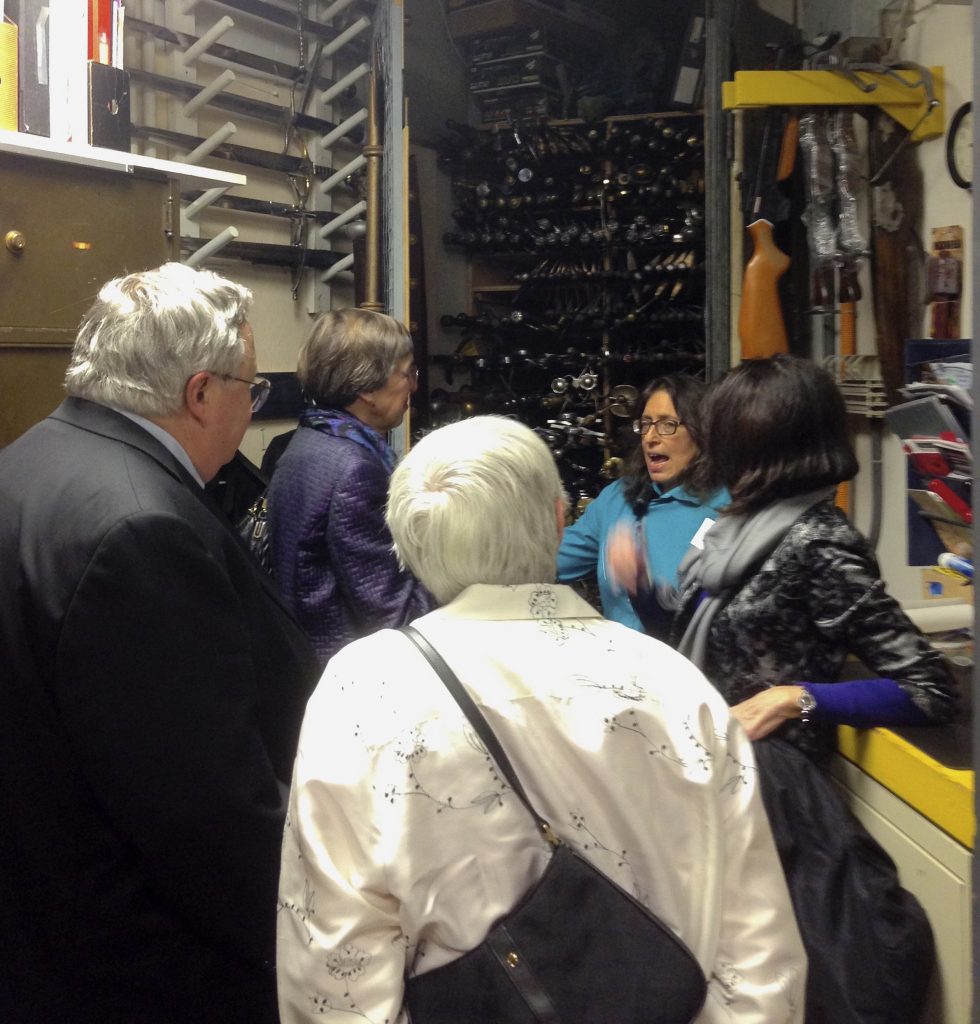
One of the greatest things is during intermission, you can stroll the balconies of the opera house and see downtown lit up.
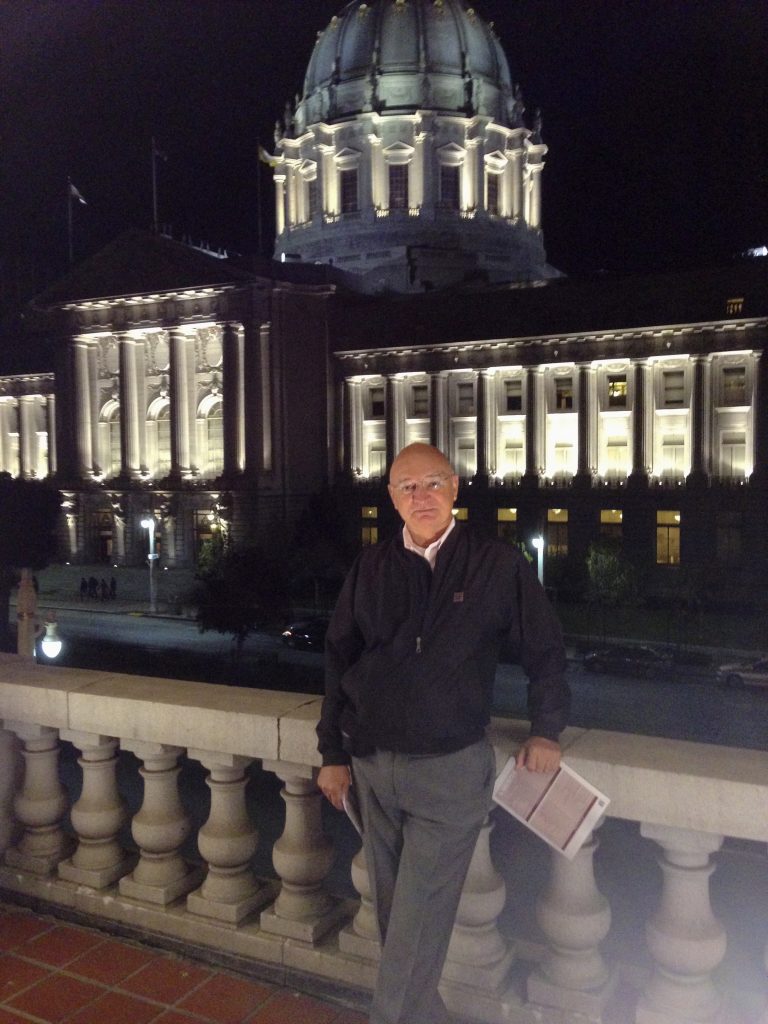
The opera house is famous for more than opera. It was the site for the United Nations Conference on International Organization that created the charter for the United Nations and the International Court of Justice. There’s a plaque commemorating the event in the lobby.
Located next to the War Memorial Opera House is the Louise M. Davies Symphony Hall, home of the San Francisco Symphony, and until this year, under the directorship of Michael Tilson-Thomas. He retired this year. He is also the creator of the New World Symphony in Miami Beach. The few times I’ve been to the San Francisco Symphony, I realized I had heard the exact same performance at the New World. It seems Michael smartly tries out the piece with the New World before bringing it to the San Francisco Symphony. It’s interesting to hear the same piece performed by a young symphony and then by a mature symphony.
Even though he retired from the San Francisco Symphony, he has kept his role at New World – the only position he’s keeping in retirement.
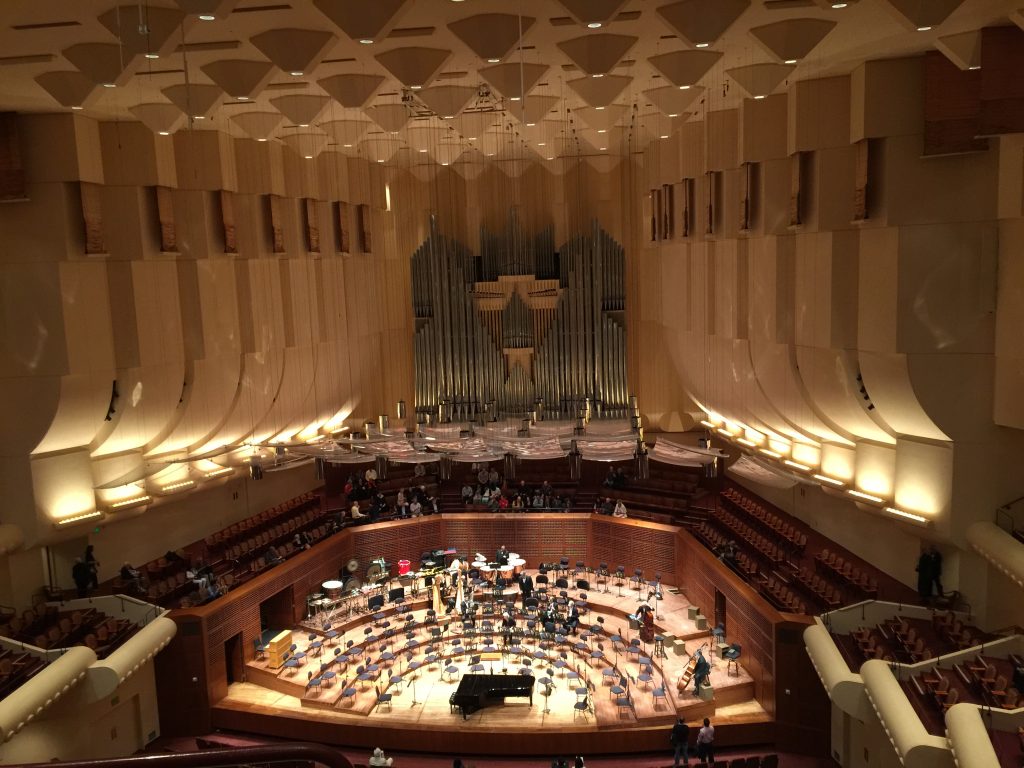
Speaking of Twin Peaks (the mountain tops) I was looking for something new to do one year during one of my opera trips. Bill Choisser put out a guide to hike to How to Walk to the top of Twin Peaks. I’ve now done that hike twice. I got to meet Bill and his partner one year but sadly, Bill has since passed away. The hike is strenuous and completely uphill from the Castro but it provides the best view of the city in its entirety.
You start the hike in the Castro. As you walk down the Castro, you’ll come to 18th Street. Take a right and start walking uphill. The entire hike, one way, is two miles. One of the first things you will pass is the Harvey Milk Civil Rights Academy, one of the first schools for LGBTQ youth in the country.
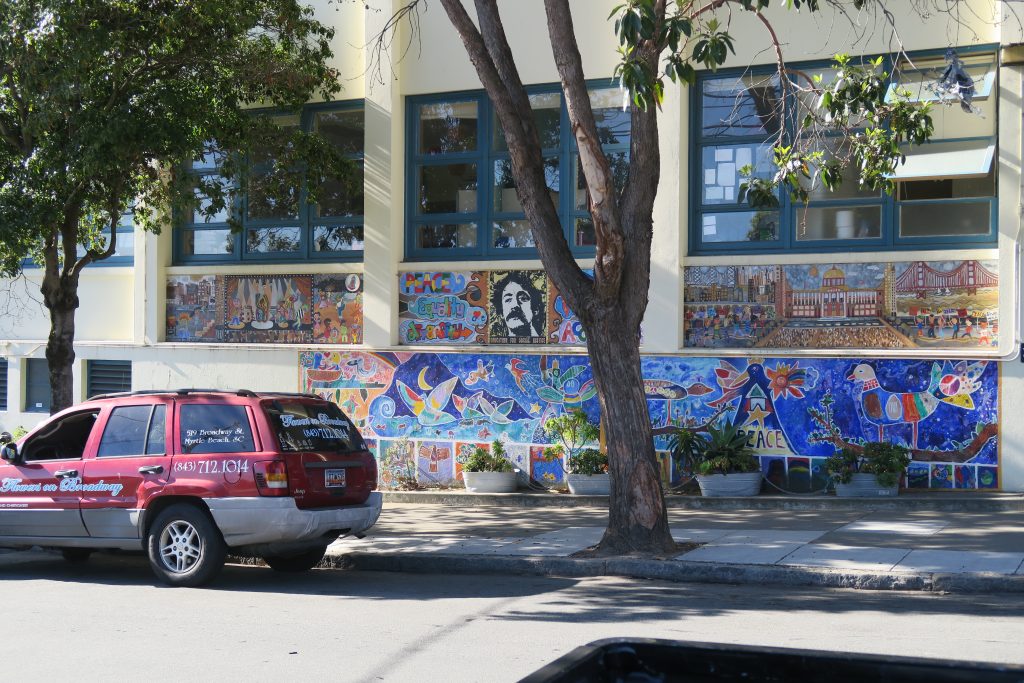
The “hike” starts by following city streets ever higher. Then you start a series of stairs unlike any others I’ve been on.
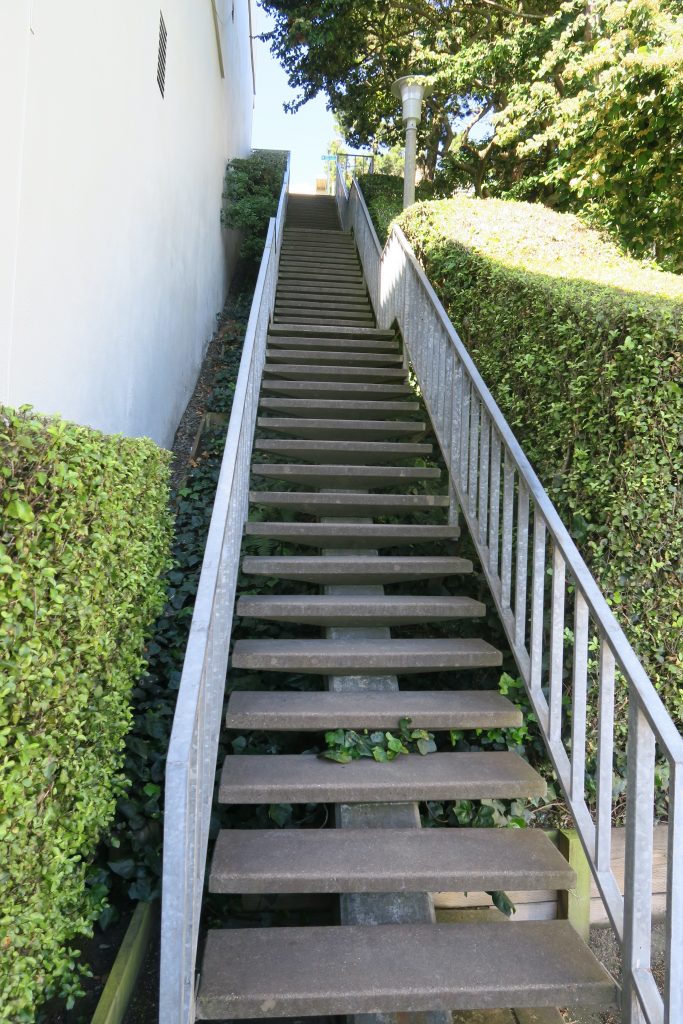
This is a challenging hike but worth it for the view.
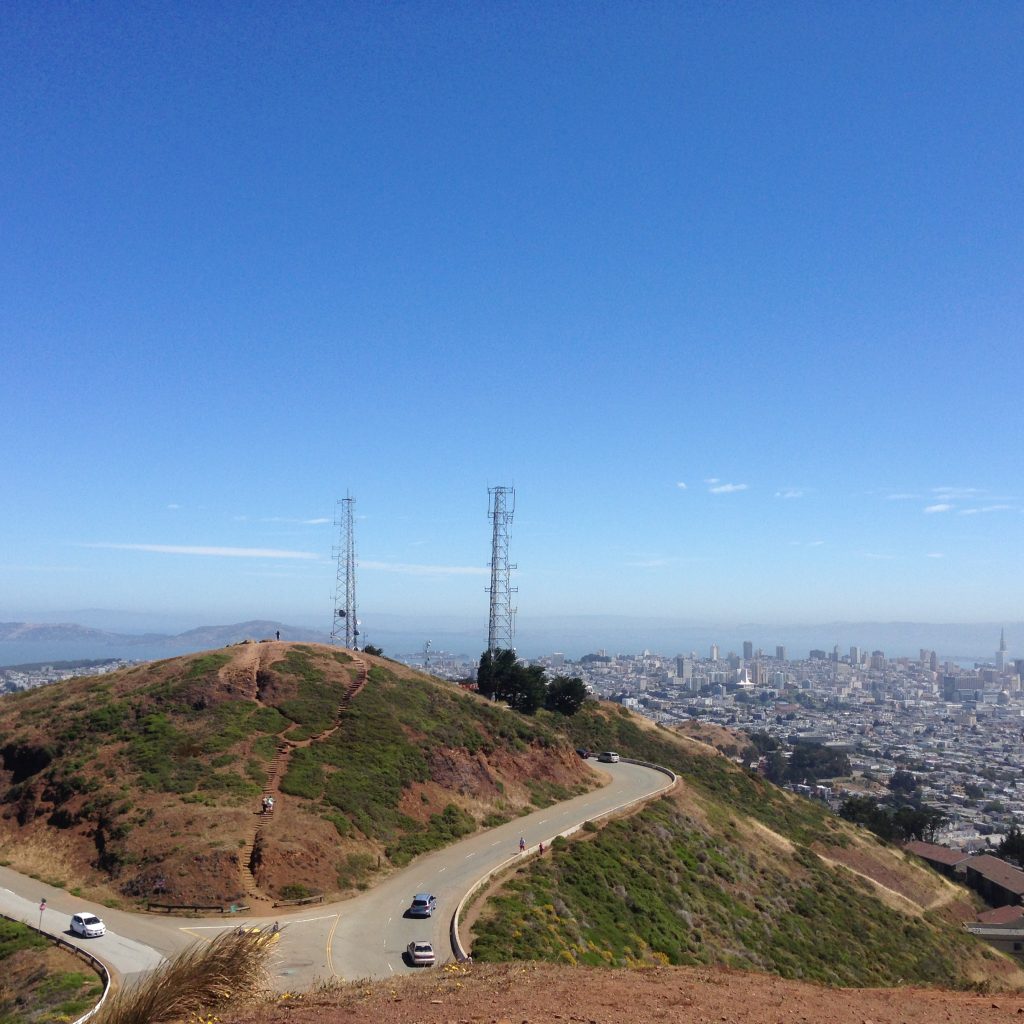
Be sure to take a lunch with you and plenty of water. You can actually catch a bus down but it’s more fun (and easier) to retrace your steps. On the way, look for the house that has been crashed into by more cars than any other in the city.
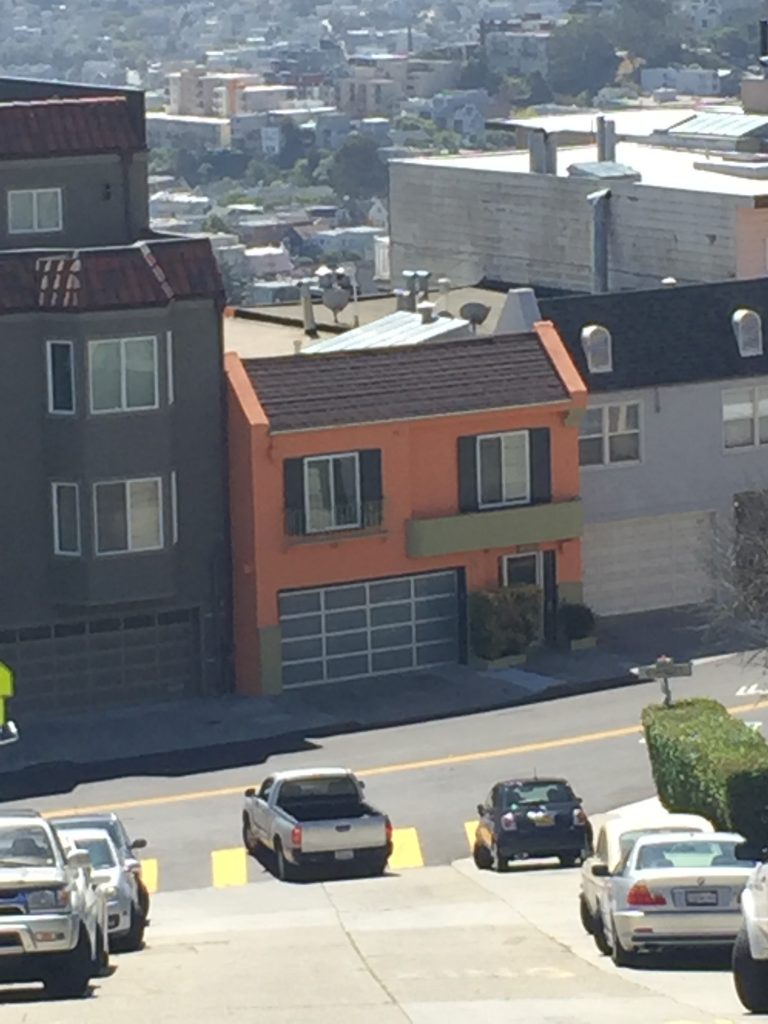
Oh course, my favorite place to stay in San Francisco is the Parker House. It’s like a home away from home. The owners no longer live on the premises – they’ve opted for the Russian River area – but still stop by weekly to check on the place. Staff are very friendly and are always willing to help.
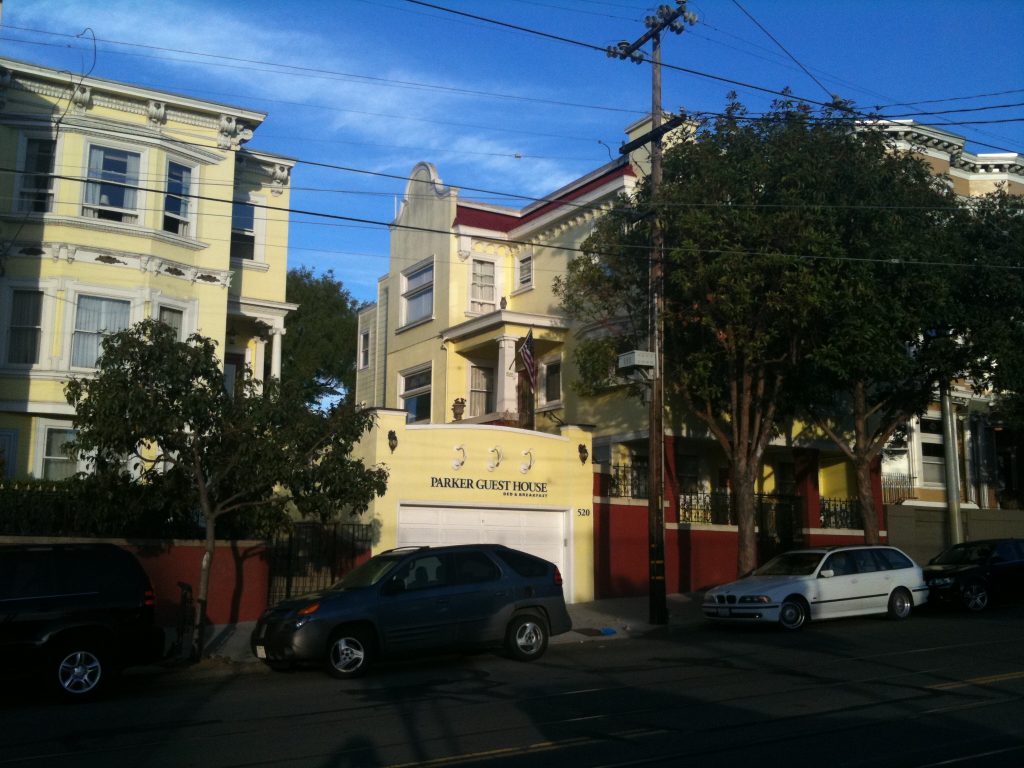
The house is just a few blocks from Market and the Castro with Muni stops all along the way. I can get anywhere in the city by bus within a few steps of the Parker.
One great side trip is to the Painted Ladies. The best view is from Alamo Square Park.
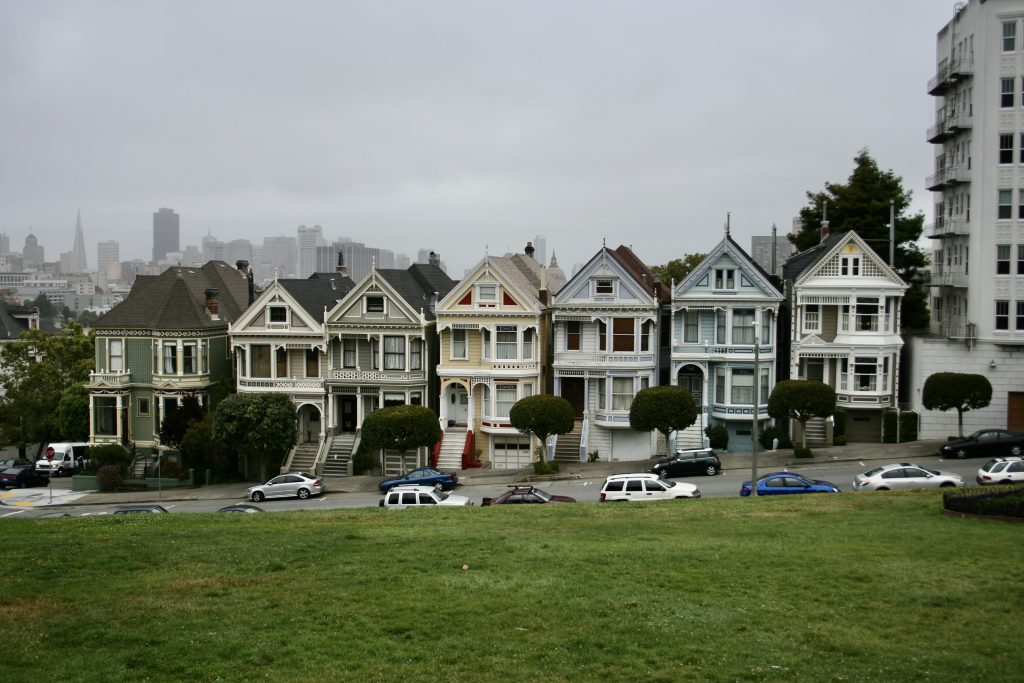
As many times as I’ve been to San Fancisco, I never made it to Lombard Street so on my last trip, I made a point to walk down the street. I had no intention of driving down Lombard because traffic down the street is a nightmare. Movies where you see cars driving down Lombard only work if they close off the street to the public so they can get the movie shot. Honestly, it’s like a traffic jam on that street. I pity the owners of the homes along the street trying to back out of their garage.
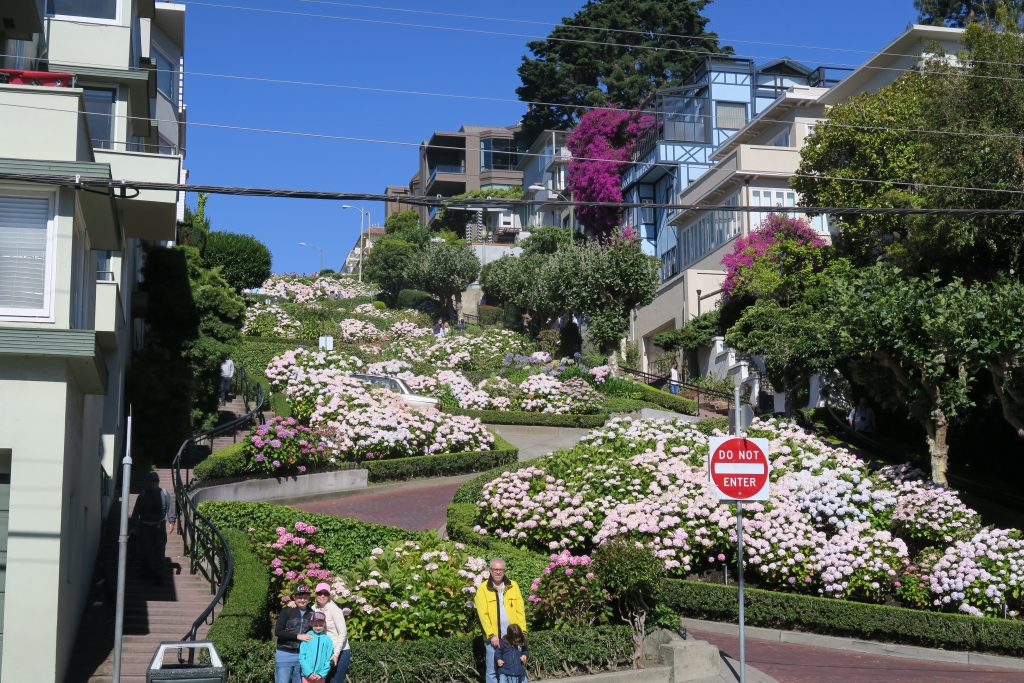
If you keep heading north from Lombard, you eventually get to Fisherman’s Wharf. If you go west from Fisherman’s Wharf, you’ll reach the Municipal Pier and Aquatic Cove.
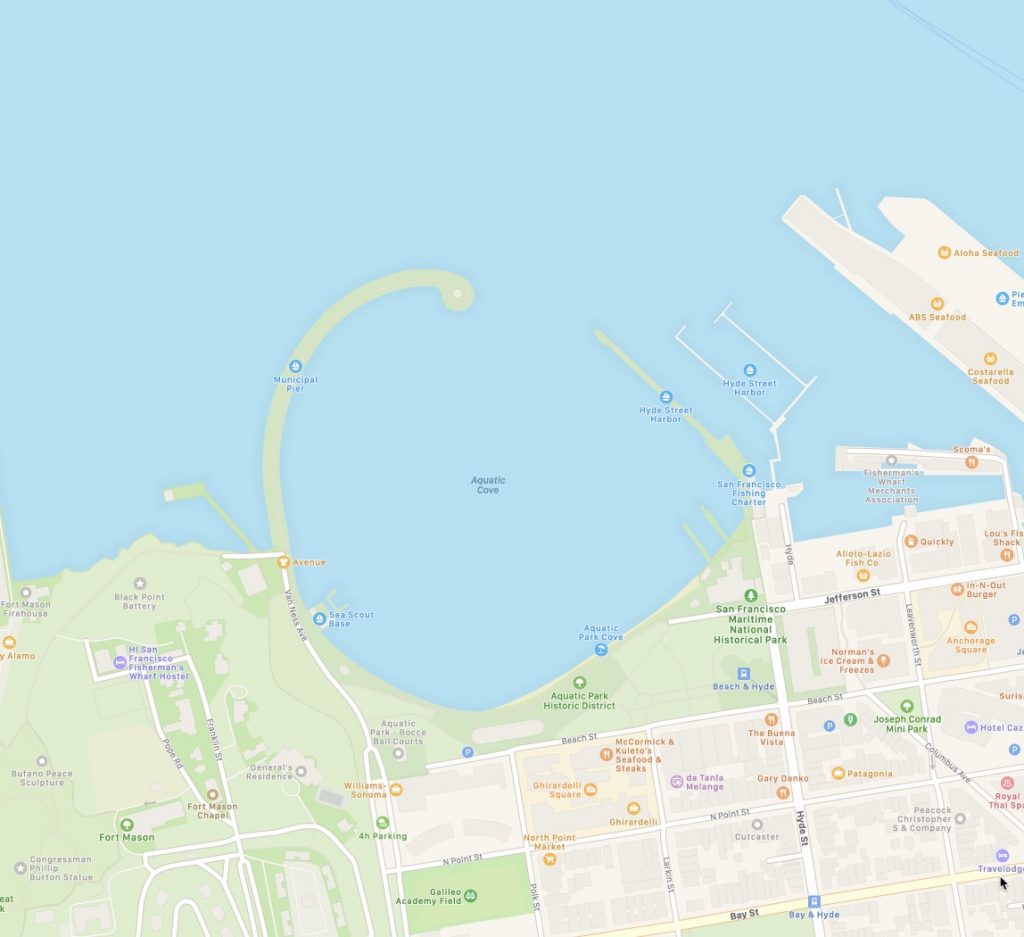
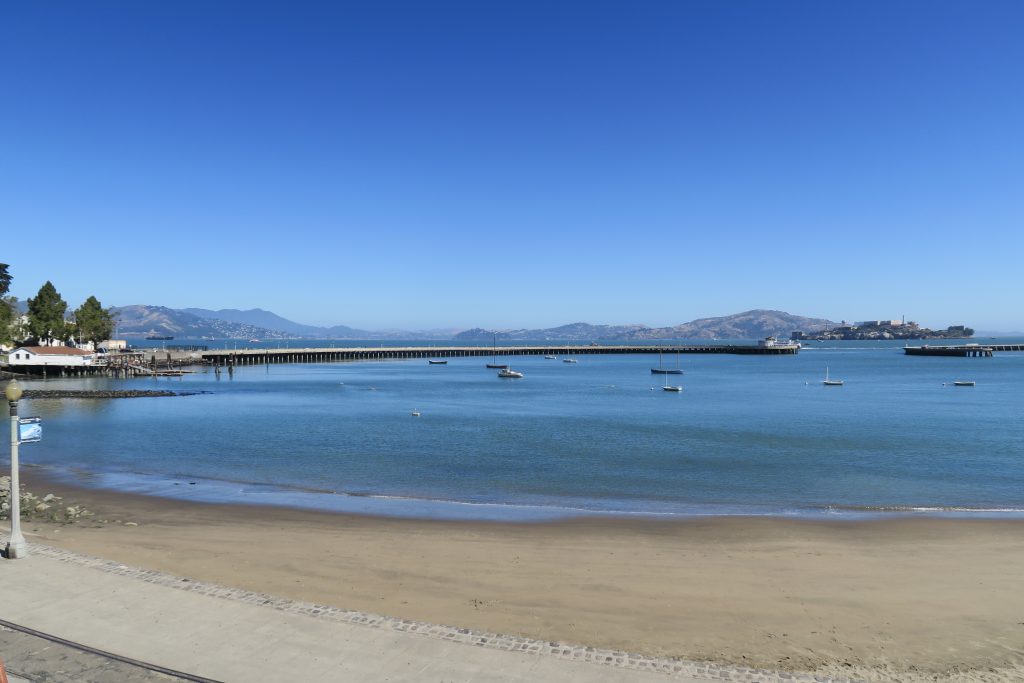
Next to the Pier is the San Francisco Maritime National Historical Park which preserves significant maritime history of the San Francisco area in the Maritime Museum.
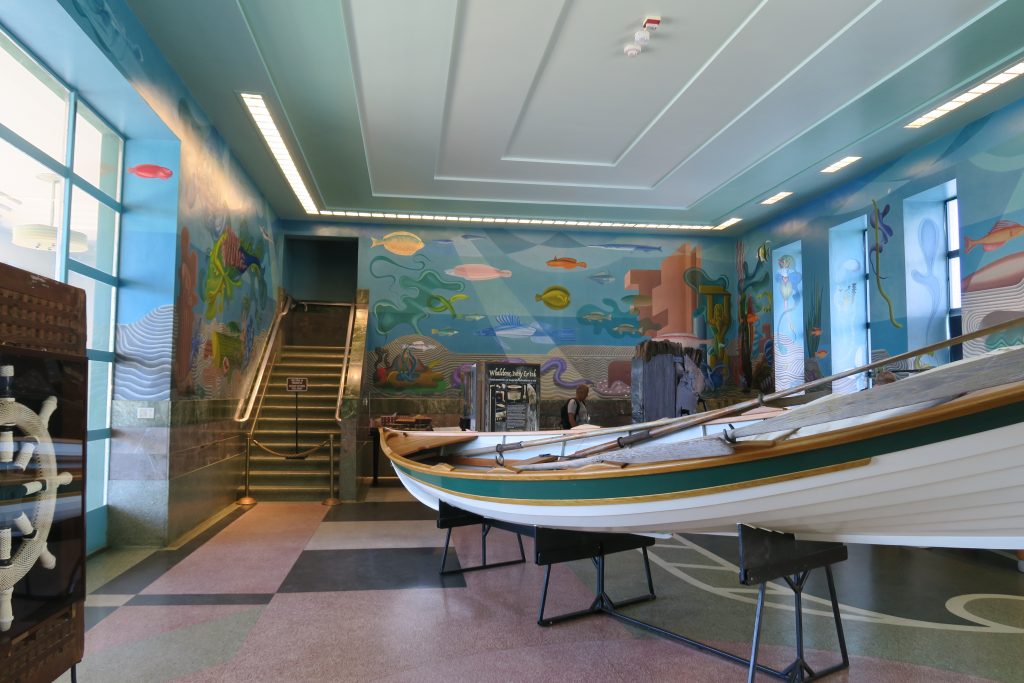
Next, if you head eastward along Jefferson Street, you’ll run into Fisherman’s Wharf. It’s always a good idea to get a “bowl” of sourdough bread with clam chowder in the bowl along with a cup of coffee. In reality, it’s hard to pass by the bakeries in the area because of the aroma of baking sourdough. By the way, Ghiradelli’s is very close by!
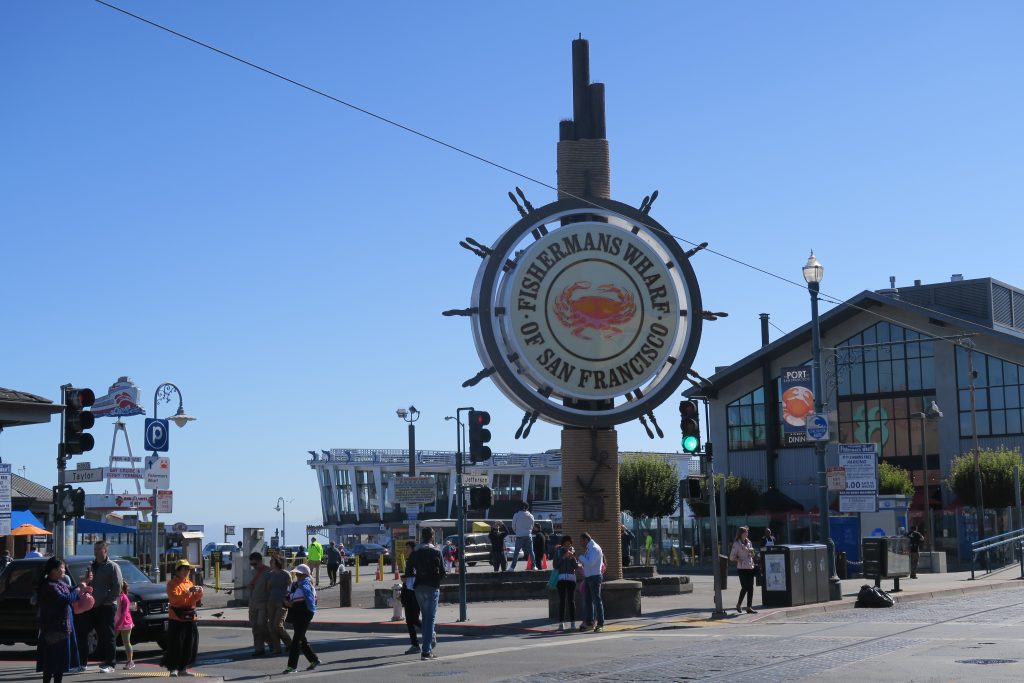
As you continue eastward on Jefferson, it becomes Embarcadero. You begin to see the numbered piers radiating out into the bay and realize the importance of San Francisco as a port city. Many of the piers have fallen into disuse and some have been taken over by harbor seals and are protected from tourists. However, pier 31 is where you board the tour to Alcatraz. The boat departs from a slip next to pier 31.
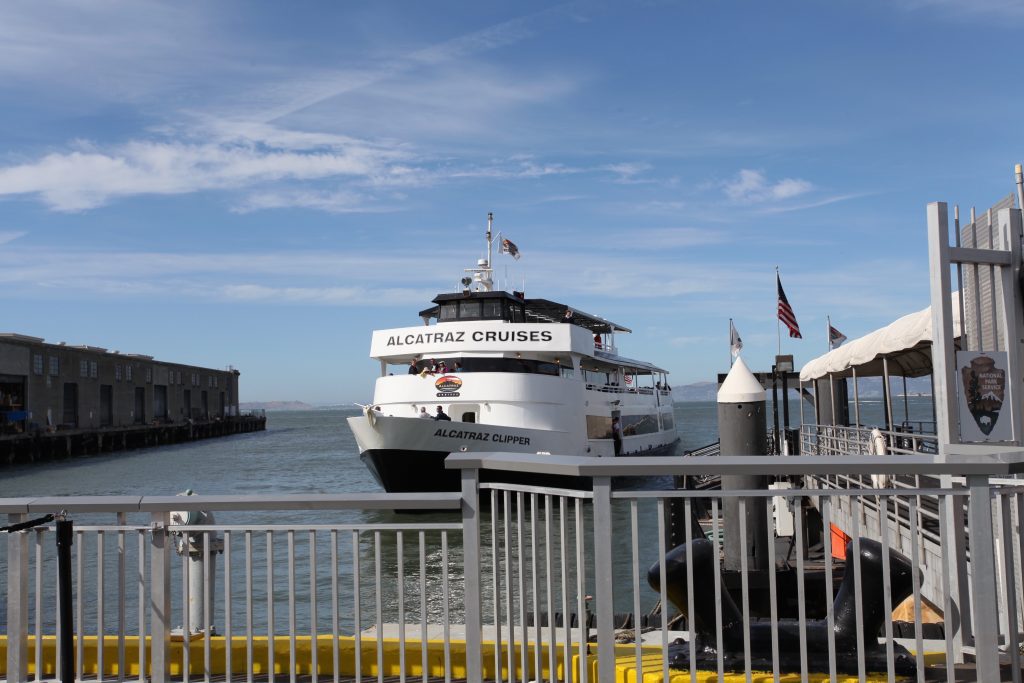
Be sure to get your tickets well in advance to Alcatraz. And I mean well in advance. I suggest 6 months before you intend to be in the city. Trust me, the Alcatraz tour is worth it and I suggest you take the last cruise of the day. You get to see the sun set over the island and also get the bonus of seeing San Francisco light up at night from the bay.
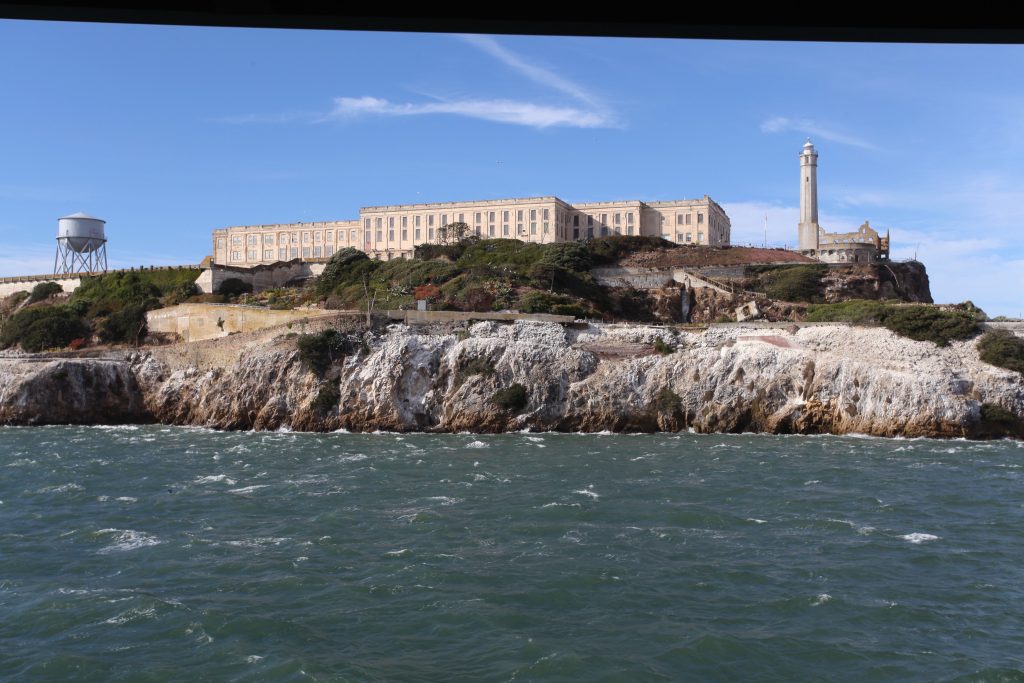
On another day, you may wish to continue to explore east along the Embarcadero towards Market Street and actually make it to the Exploratorium. The idea of the Exploratorium was Frank Oppenheimer‘s, world renown nuclear physicist and brother of Robert Oppenheimer. It was originally located at the Palace of Fine Arts but moved in 2013 to the current location at piers 15 and 17 on the Embarcadero.
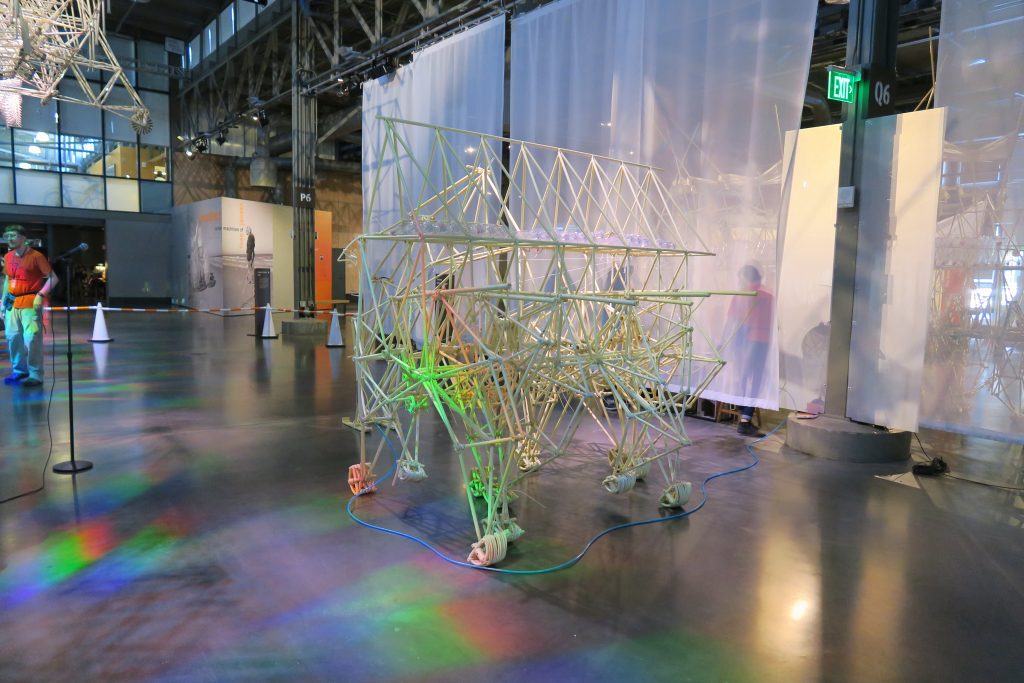
As you continue up Embarcadero, you will finally reach the intersection with Market Street. There you will see the tower of the Ferry Building which serves as the terminals for most of the ferries that cross back and forth across the bay. In addition, there is an extensive market in the building along with numerous restaurants. It’s a significant part of the heart of San Francisco and a great place to meet the locals.
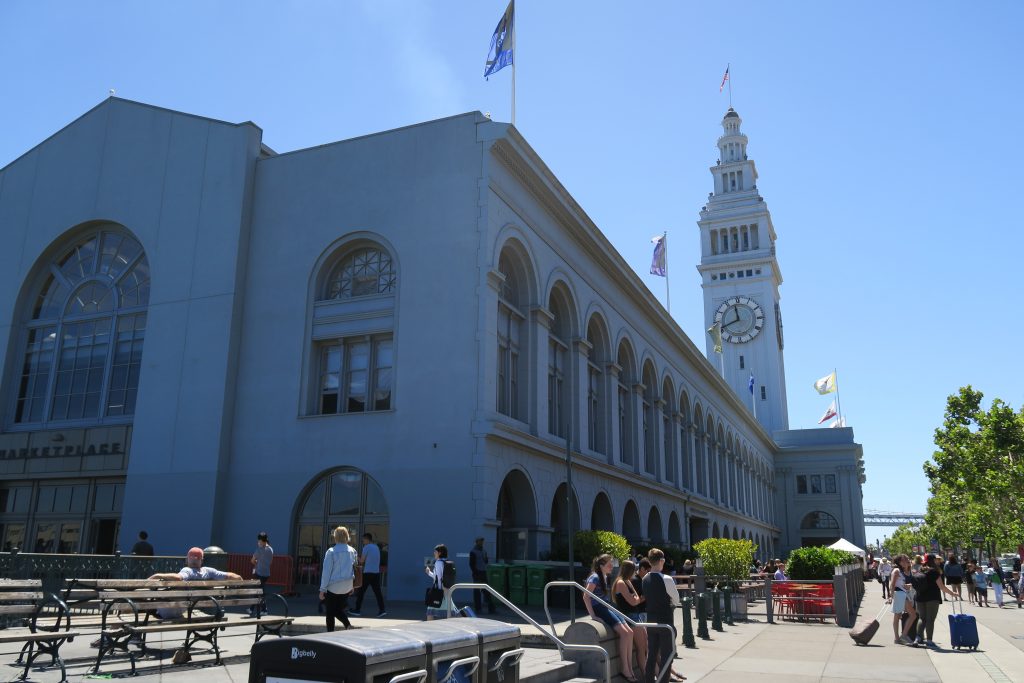
I’m not sure when I got up enough nerve to head to Golden Gate Park. It was probably on my fifth or sixth visit to the city. The reason I was so hesitant was it took several bus transfers to make it to the park and it took me a while to realize which was the best stop to exit to get where I wanted to go. Eventually, I just gave in and learned to enjoy the ride and take in the view and simply walk all over the garden.
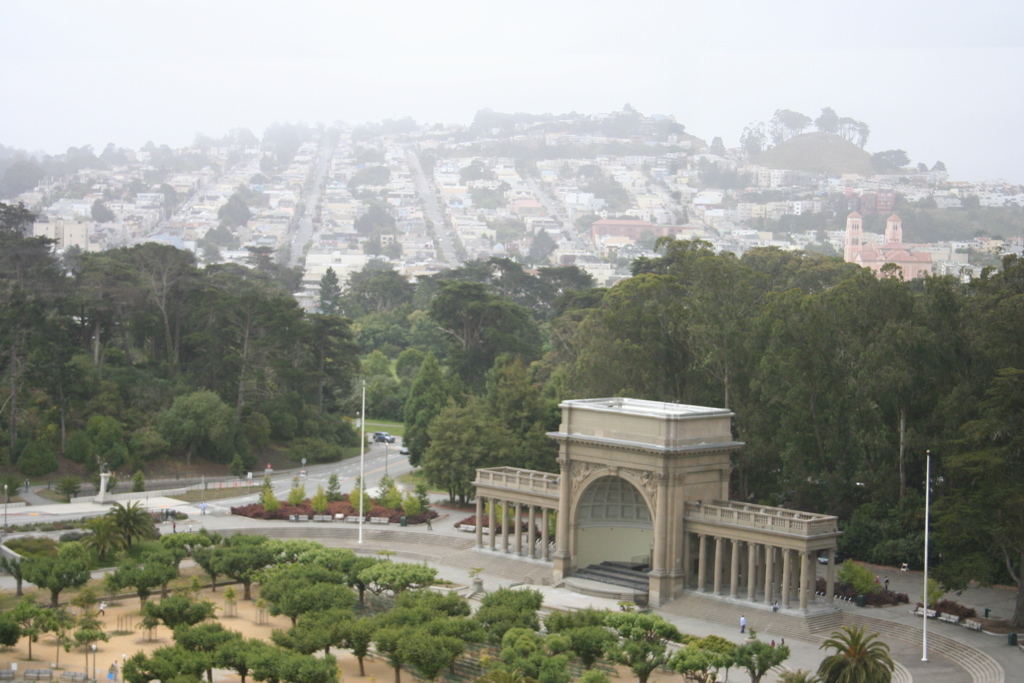
The park consists of over a thousand acres in the shape of an elongated rectangle with a western terminus of the Pacific Ocean. At one time it was nothing but a bunch of sand dunes. It was John McLauren that converted the sand dunes into what is now one of the worlds most amazing parks. It’s also the home to the San Francisco AIDS Memorial, the de Young Museum of Art, the California Academy of Sciences, several specialized botanical gardens, a polo field and Kezar Stadium. You could spend your entire trip in Golden Gate Park and never see it all nor get bored.
One special place to me is the de Young Museum. The museum has been around since 1895 but at its current site, the building was severely damaged in the 1989 Loma Prieta earthquake. That building was demolished and the new building was completed in 2005. It’s a magnificent structure. If you ever get there, be sure to go to the top of the observation room and get a spectacular view of the park and the city.
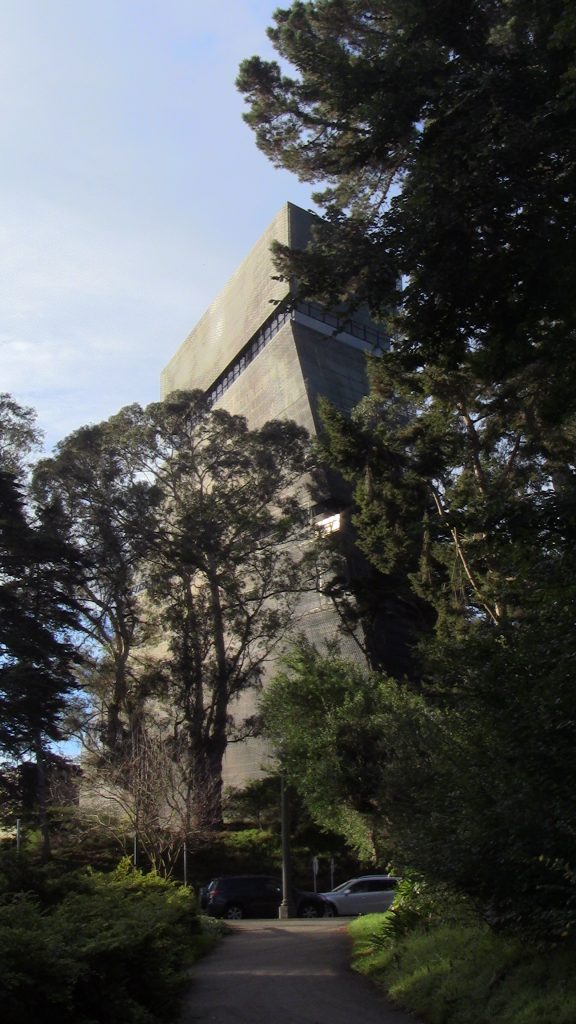
Directly across from the de Young is the California Academy of Sciences. I have to admit the first time I visited I was disappointed but it was very soon after they opened. I’ve been back and have since been impressed. There’s the aquarium combined with a rain forest, and you can actually walk into a room and experience an earthquake.
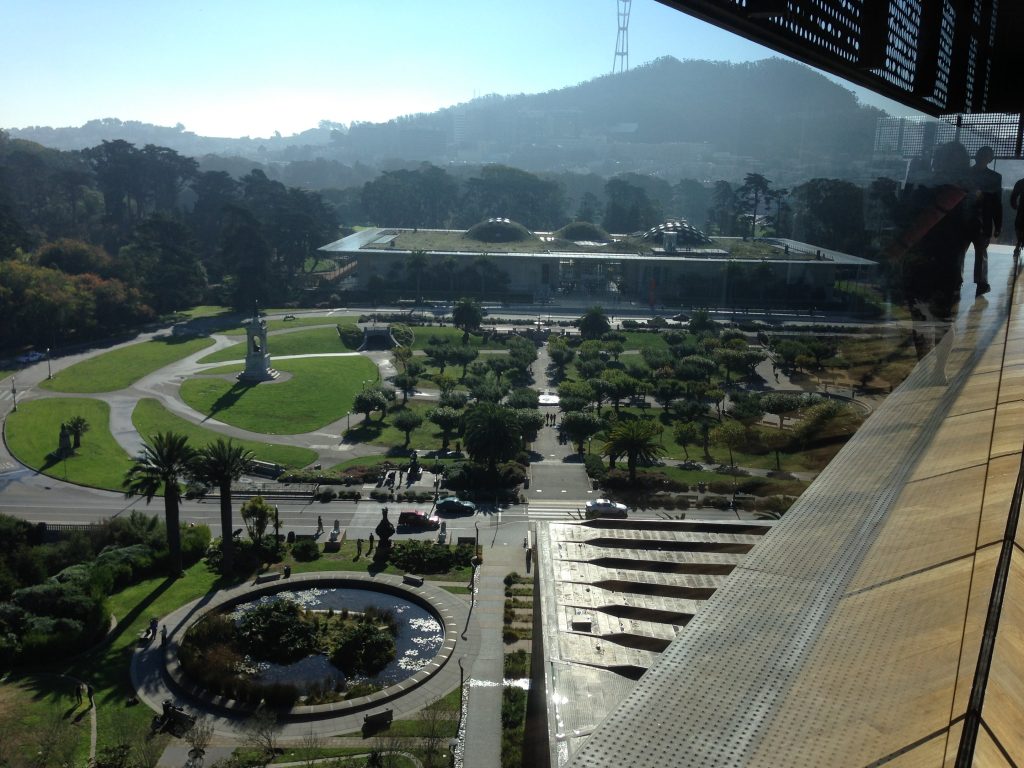
Between the de Young and the Academy is a large garden bounded by the Music Concourse on one end. Every time I’ve been there have been several classes of Tai Chi going on the grounds.
A sister museum (one ticket gets entry to both) is the Legion of Honor at Lands End, southwest of the Golden Gate Bridge. Where the de Young houses numerous ethnic collections, the Legion houses the fine art. The building is eye catching to say the least.
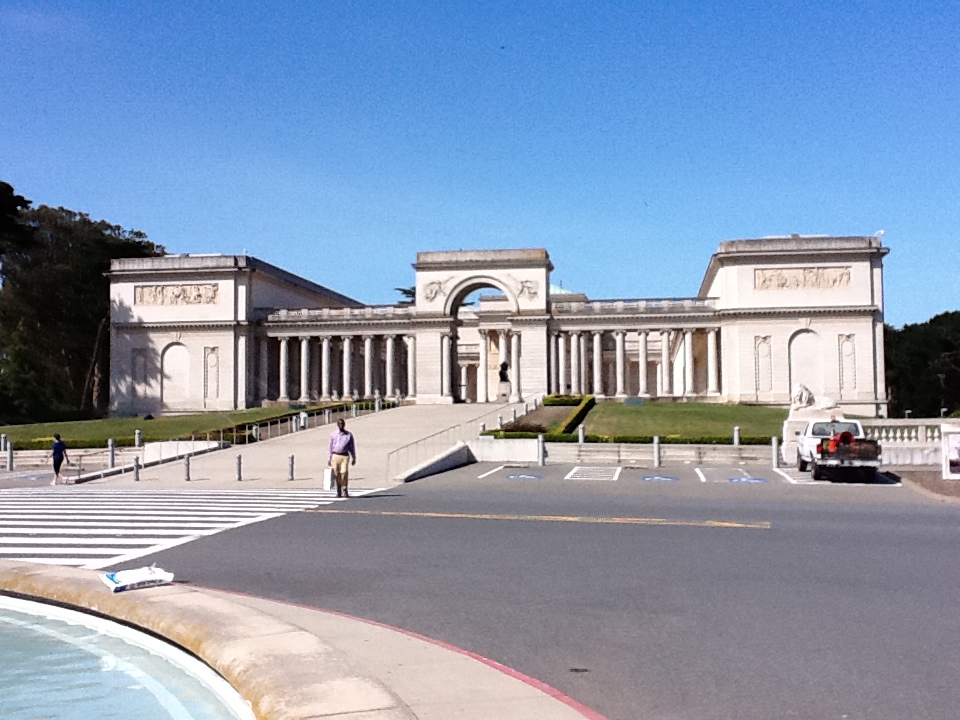
It is especially noted for its Rodin collection including one of Rodin’s casts of “The Thinker.” The museum also has one of the best rated restaurants for any museum in the country. I never visit San Francisco without a trip to both the de Young and the Legion.
By the way, Lands End is also the terminus for the Lincoln Highway that runs from Times Square in New York to Lincoln Park at Lands End. It was the first transcontinental highways in the United States and Dwight David Eisenhower led a convoy along the highway in 1919 when a lot of the road was just muddy ruts.
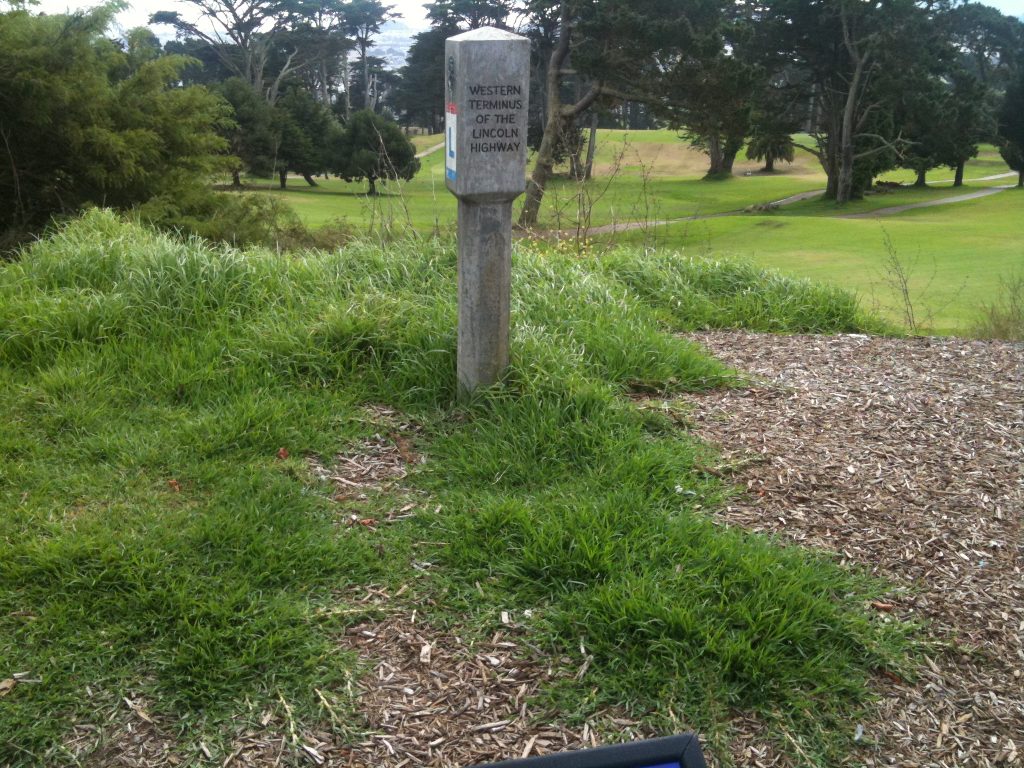
Just east of the Legion of Honor is the trail head for Lands End, one of the more beautiful trails I’ve hiked anywhere. I rate it as one of my top five trails. You walk high above the Pacific Ocean with views of the Golden Gate Bridge.
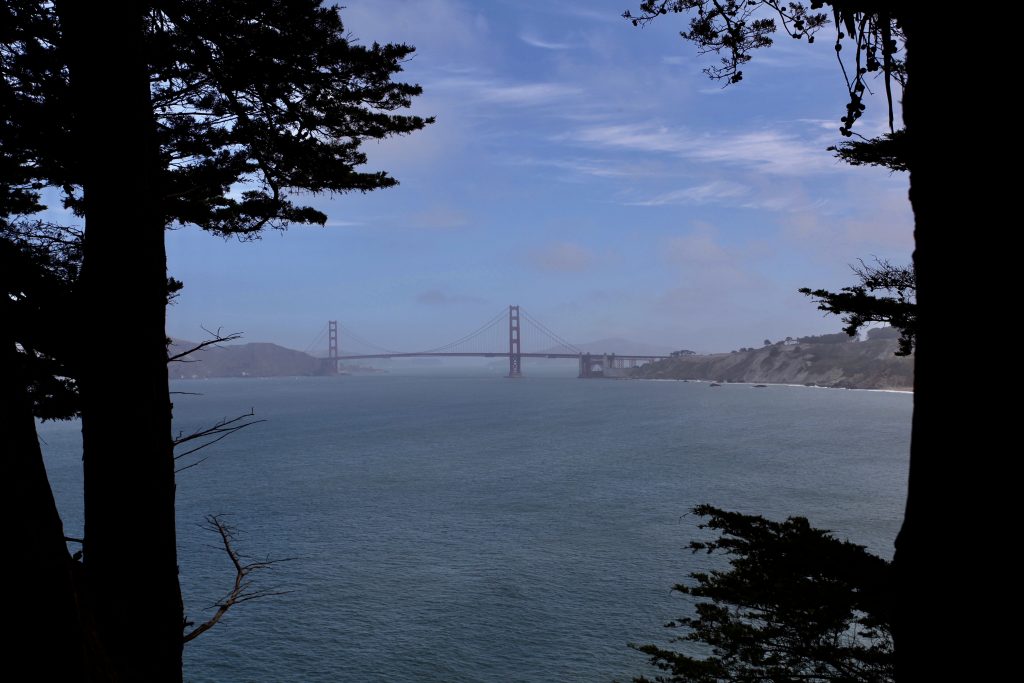
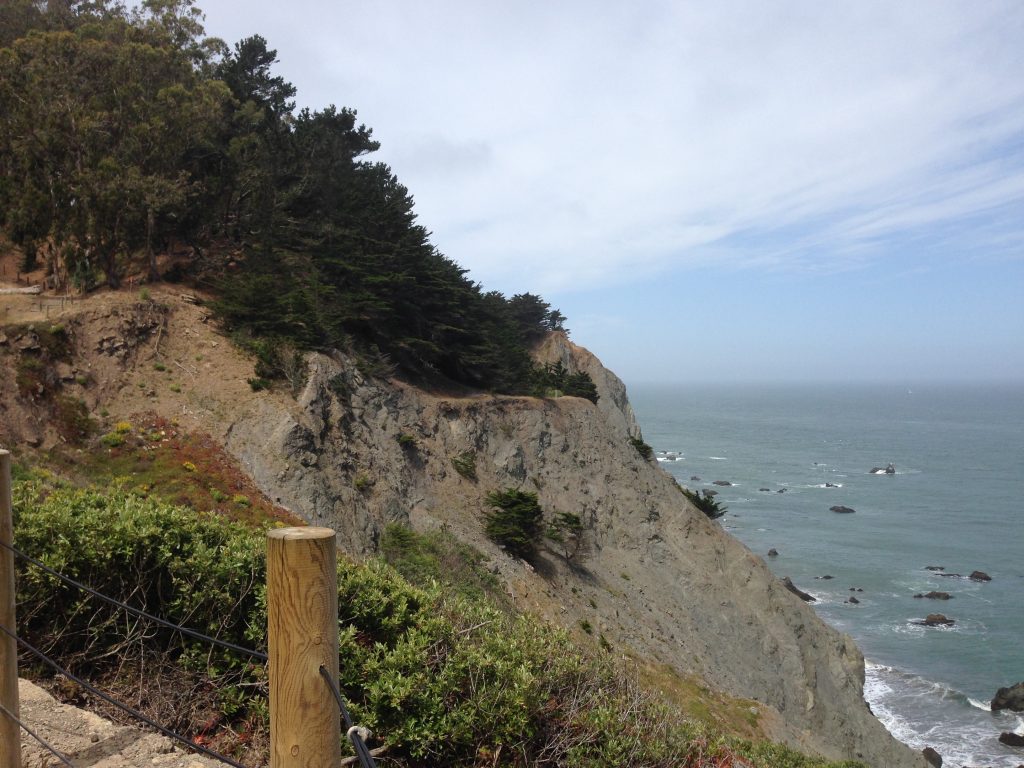
If you read any of the books of Tales of the City series by Armistead Maupin, you know that MaryAnn watches in horror as a person slips over the side of the cliffs on the trail to their death. Hiking the trail, I can certainly understand how that could happen.
The trail is a four mile loop but I hiked it only until the Cliff House, a famous restaurant overlooking the Pacific. Sadly, due to the pandemic, the company that operates the Cliff House for the park service did not get renewed and the restaurant is currently closed. Hopefully, it will re-open again. There have been several iterations of the Cliff House over the years. It has burned several times but always rises from the ashes.
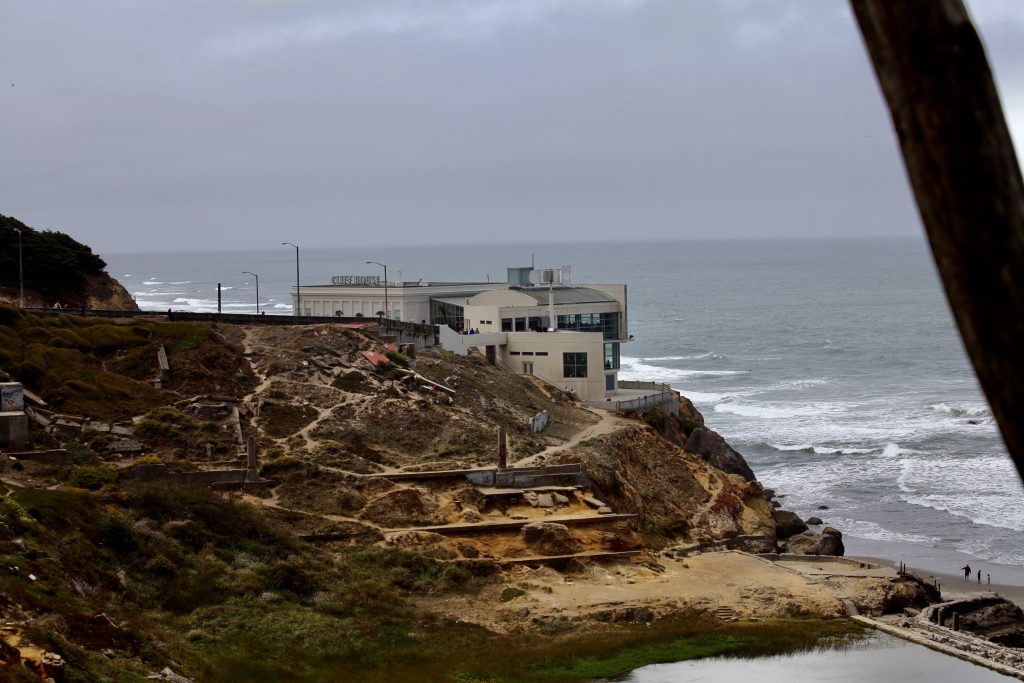
Not so the Sutro Baths. This was a public salt water pool complex built in 1896 and which burned to the ground in 1966. At one time, the baths were so popular that a separate small rail line ran from the city to Ocean Beach where the baths are located, next to the Cliff House.
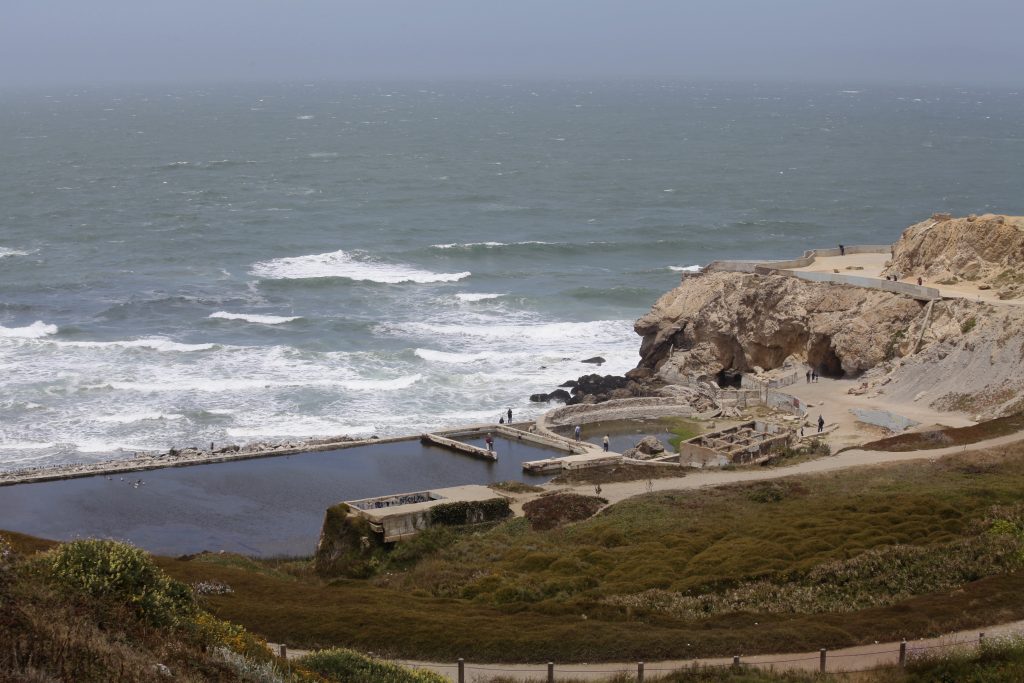
When I think of what makes a city a good place to live I think of three things: good health care, good art and culture, and a good transportation system (I getting older and need that). San Francisco has all three. The health care is top notch. There the University of California, San Francisco (USCF Health/Medical Center) which is one of the top ten in the U.S.
I’ve had experience there. While at an Apple Conference, I slipped and fell in a hot tub at a hotel – and yes, I was sober. I asked the desk for a bandaid and went to bed. I woke the next morning to bloody sheets. They suggested I head to USCF emergency room. After being chastised for getting in a hot tub (dirty water as far as doctors are concerned) they stitched me up and sent me on their way. Very professional!
I’ve already talked about the opera. There’s a lot more art and culture in San Francisco.
What really makes the city nice is the transportation system. Locals like to complain about the Muni and BART (Bay Area Rapid Transit) but compared to other cities, San Francisco is light years ahead on public transit.
Bus stops typically have a notification system that flashes across a screen telling you when the next bus will arrive. All the system is electric as is evidenced by the overhead cables.
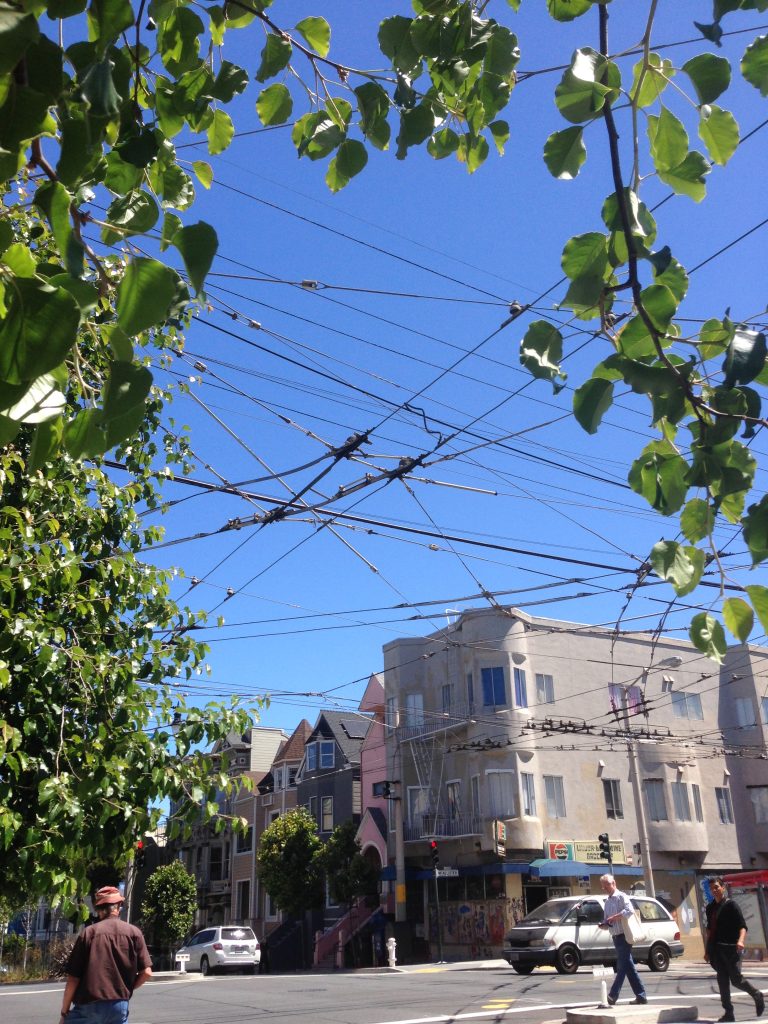
I remember the first time I saw sparks shoot from the wires and connector to the bus. It’s a little startling the first time.
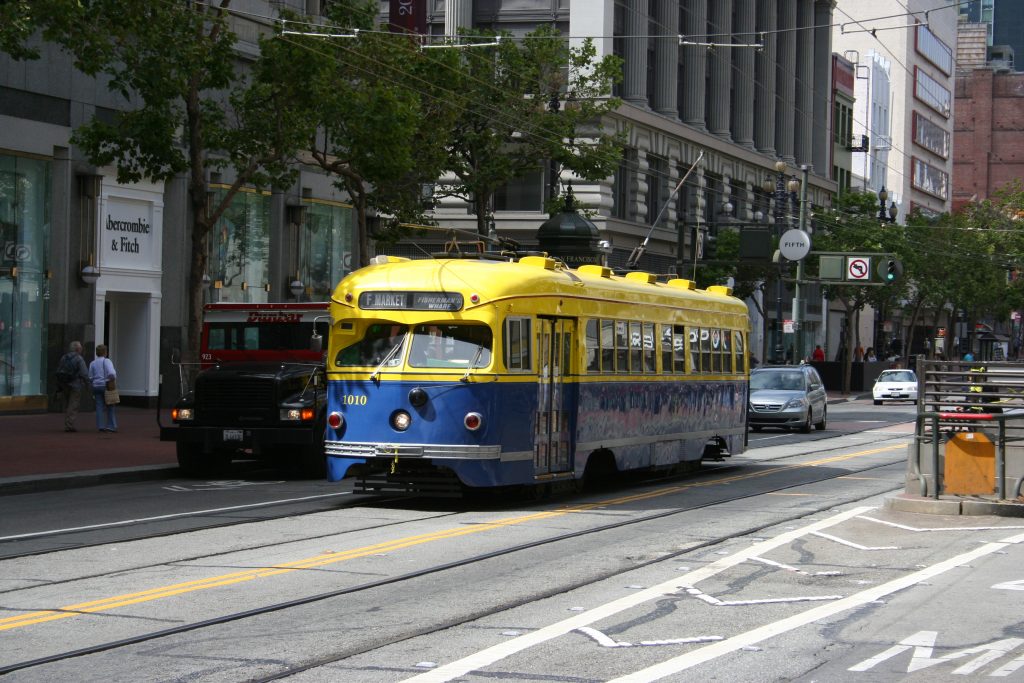
Sometimes the connector pole is dislodged on a turn and the driver has to get out and raise the pole back to the connector in order to continue – no easy task.
The city has also preserved the old forms of vintage trolleys. They mostly run along Market Street for the tourist trade but are also essential in getting around to areas surrounding Market Street. They also run along the Embarcadero.
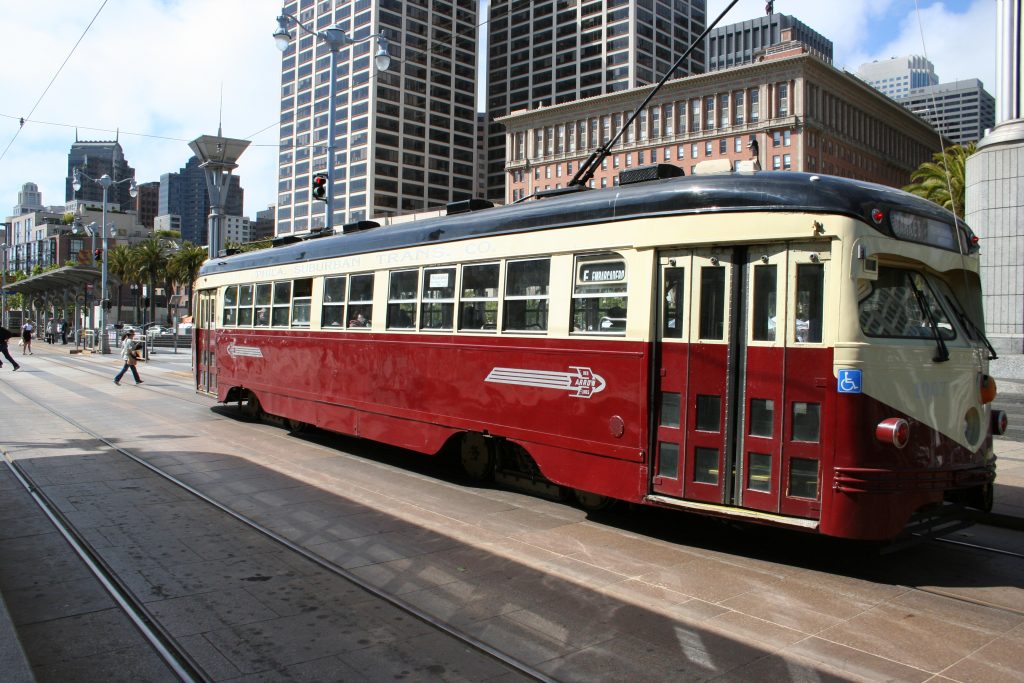
Of course, the most famous form of transportation is the fabled cable car, particularly along Mason and Powell. Here, the non-electric cable runs underground and the cable car attaches to the continuous running cable through a slit in the road bed.
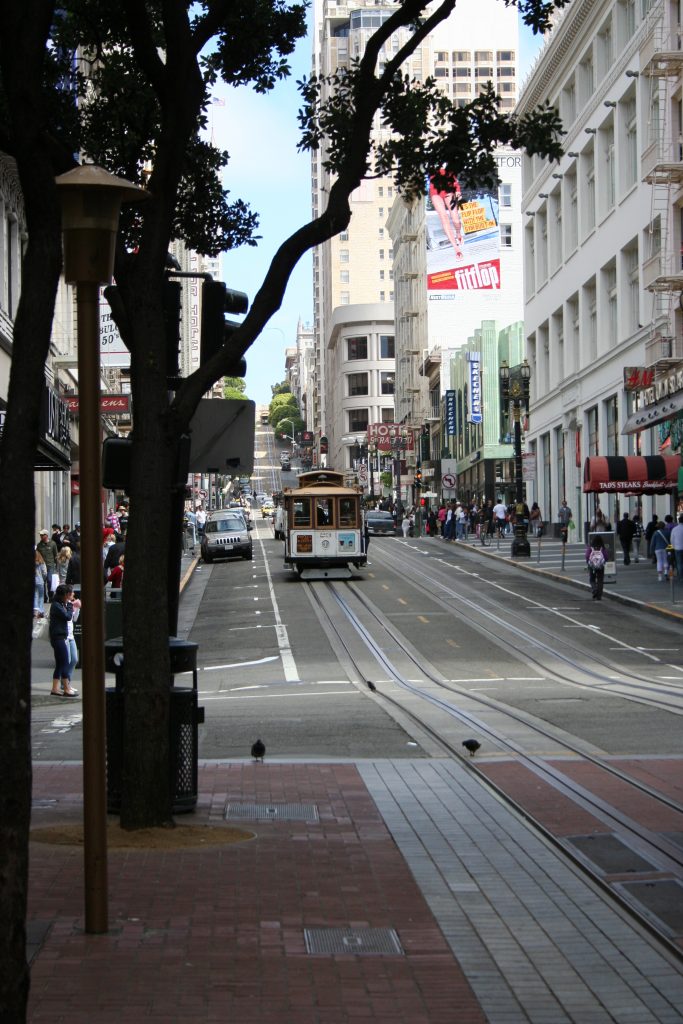
Never, ever try to catch the cable car on Market and Mason. The line moves fairly quickly but you’ll still wait 30 minutes or more to board a cable car. It’s better to walk up Mason a few stops and catch it there. Likewise, when it reaches the stop just before Fisherman’s Wharf, it’s always best to walk a few stops past to get on.
I always buy a Muni pass at the airport (3 day or 7 day – depending on my stay) and that allows you access on any form of transportation, including cable cars) with the exception of BART. I usually take BART from the airport to a Muni Station and then go from there. A taxi will cost you around $50 from the airport to downtown San Francisco while a BART ticket will cost around $9.65 (one way, $19.30 round trip). The trip takes about the same amount of time.
I think I would add a fourth thing for cities – great food. San Francisco has great food, probably better than any place other than New Orleans and certainly on par with New York.
My favorite restaurant near the Parker Guest House is Frances – named after the chef.
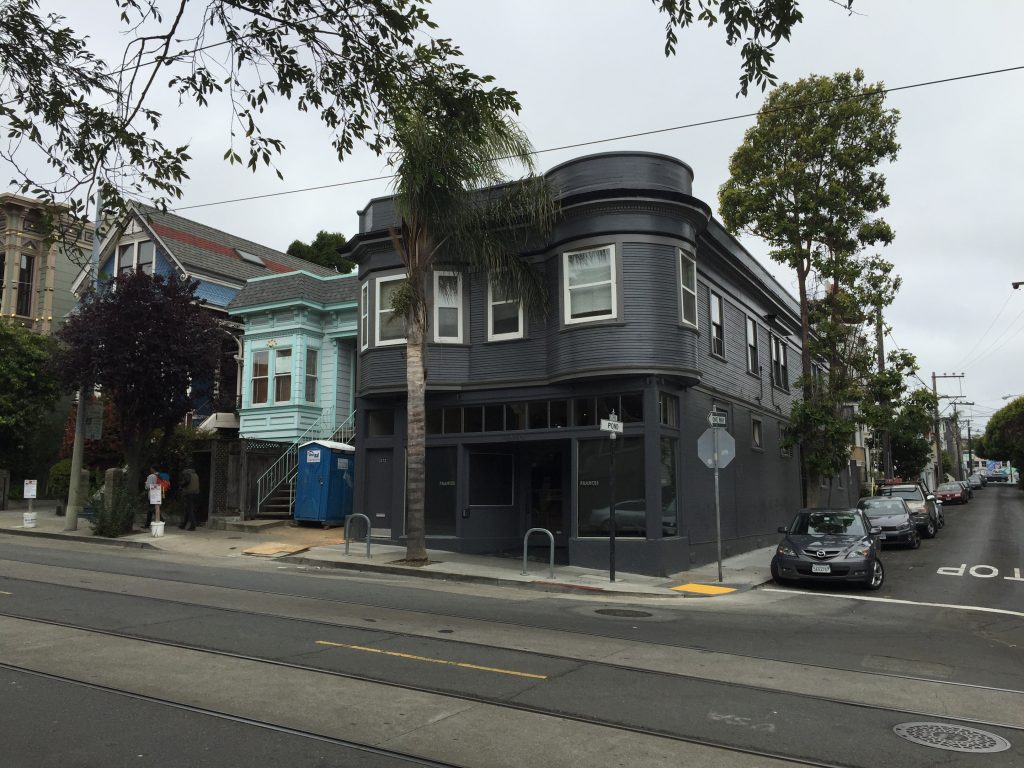
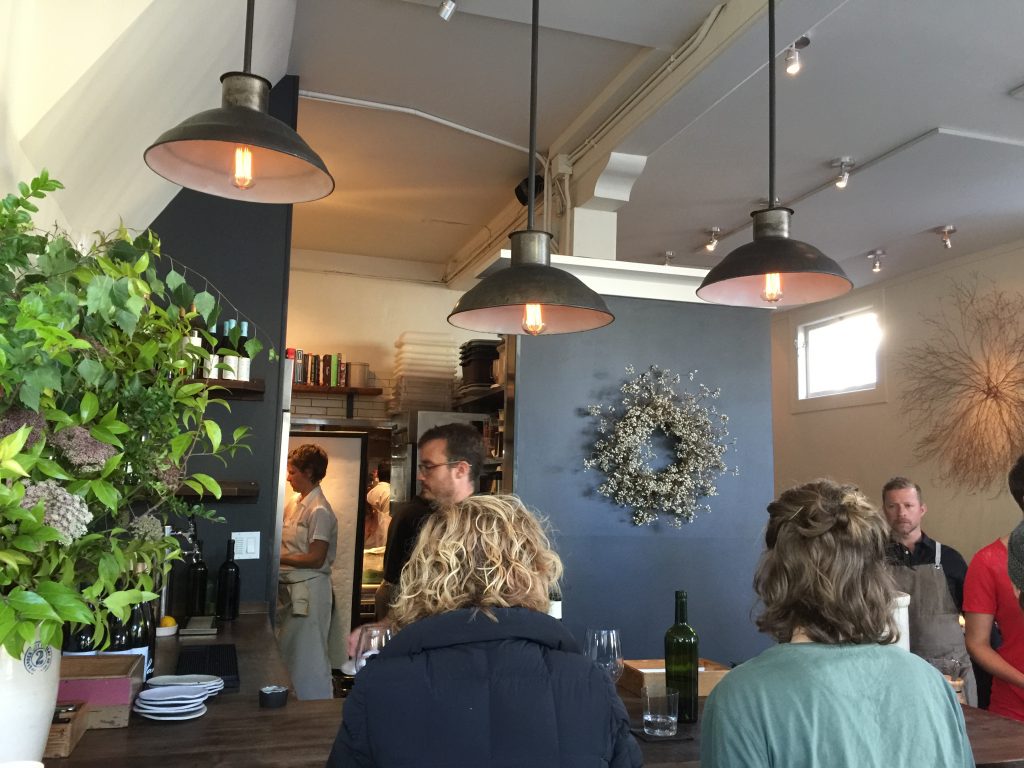
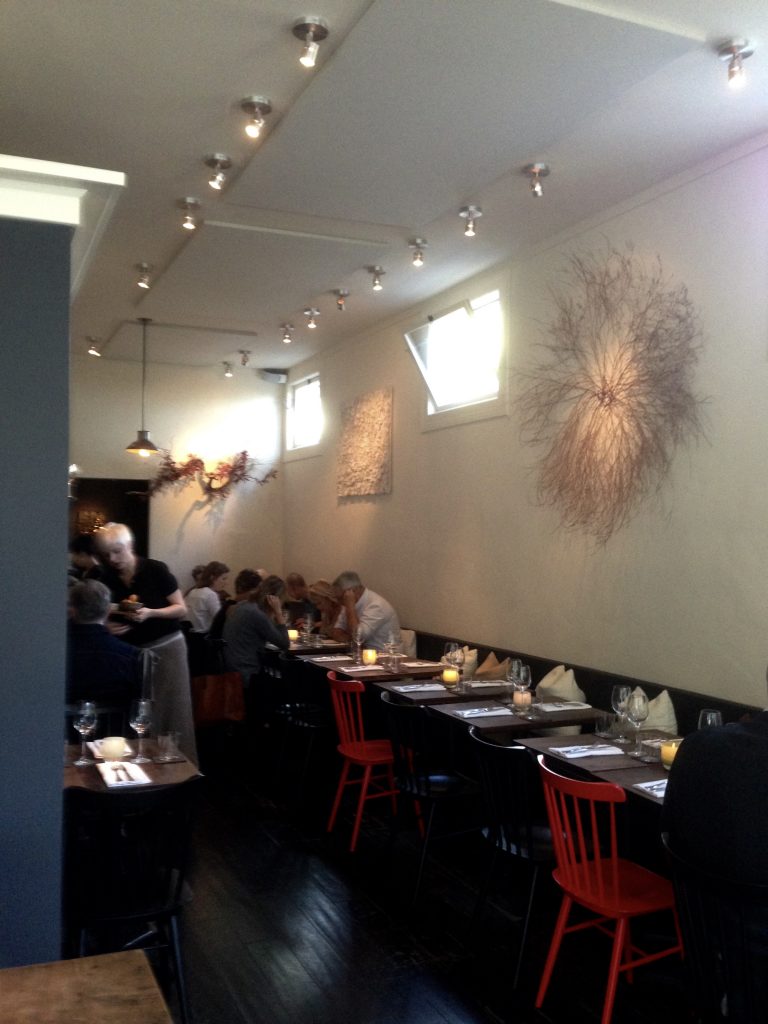
Another favorite place is right on Market Street down from the Castro. It’s the world famous Zuni. Sadly, one of the owners just died and the original chef Judy Rodgers (of Chez Panisse) also died. However, the tradition remains and they have just re-opened after the pandemic. The go-to dish here is the roasted chicken. They cook it in a wood burning oven and it requires at least a 30 minute notice before they can serve it. It’s to die for.
I’ve actually cooked their roast chicken twice at home. It is almost as good as the one at Zuni but you have to get the oven sooooo hot that the chicken fat splatters everywhere, all the smoke detectors go off, and you can’t see the oven for the smoke. I pull this recipe off every five years or so and bite the bullet with cleaning the oven. Be sure to make reservations at Zuni.
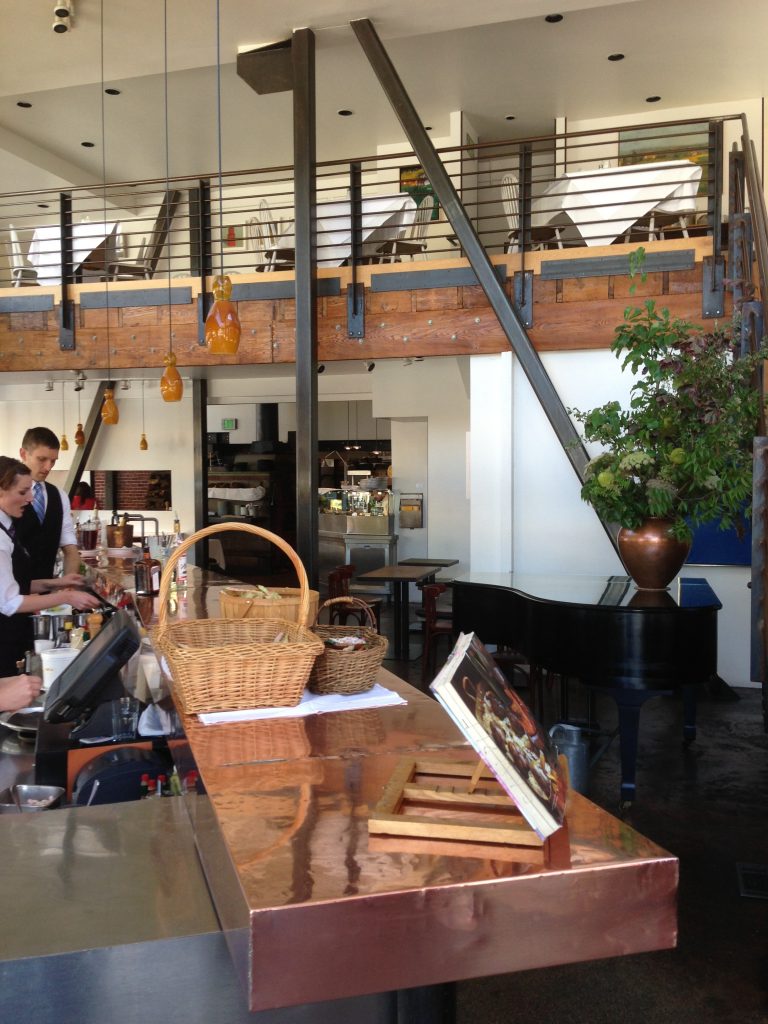
My friend Wade (opera buddy extraordinaire) took me to my next two favorite places. Actually, come to think of it, he introduced me to Zuni. Way to go Wade!
If you want a lush dining experience, try the Rotunda at Neiman Marcus on Union Square. I think it is currently closed due to the pandemic but it’s too popular not to re-open. Just be sure to make reservations.
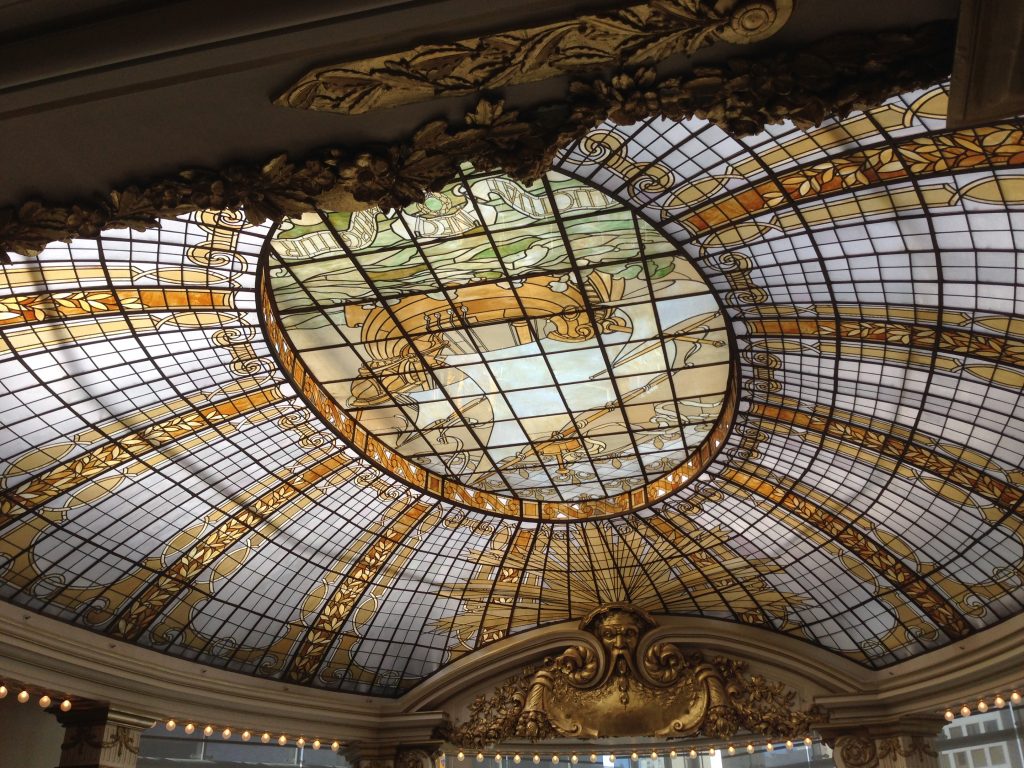
You also have to do Sunday brunch at the Palace Hotel with bottomless mimosas. Actually, you can’t ever drain a glass before a waiter is pouring you another. It’s buffet style but the buffets runs around the entire perimeter of the room.
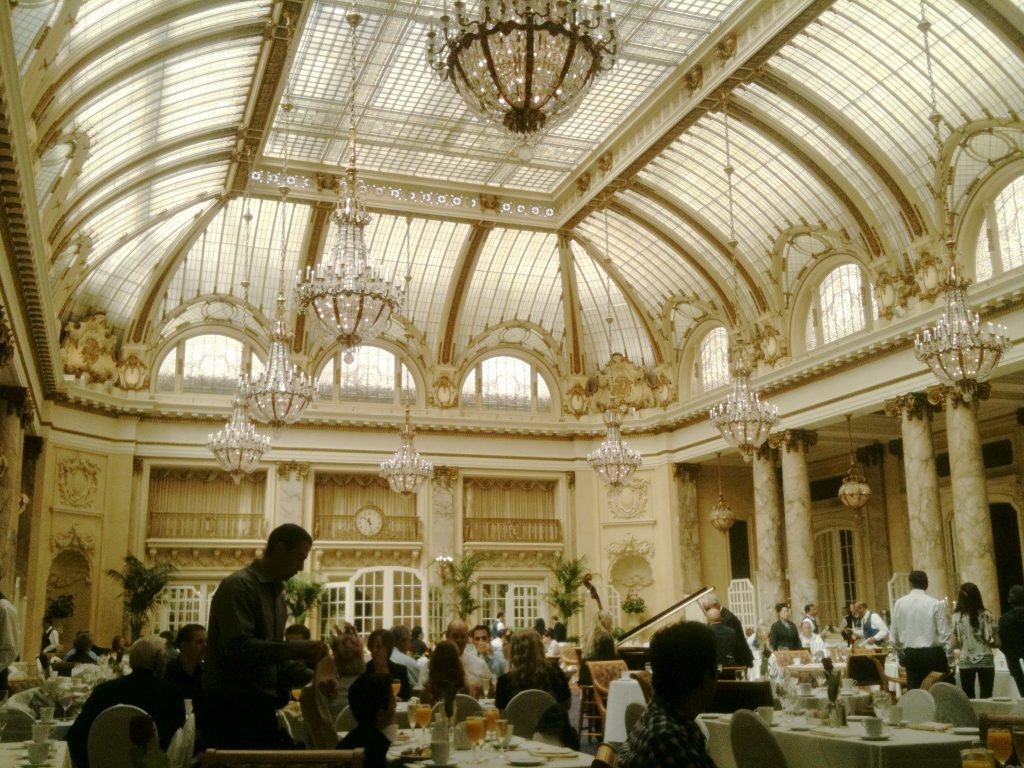
San Francisco is a city of museums. I’ve been to most of them. The Contemporary Jewish Museum is excellent. What’s even nicer is it is close to the Moscone Center and several other museums.
On past visits I have gone to the Museum of Modern Art (MOMA) but wasn’t too impressed because it was small and somewhat dated. In 2016 it underwent an expansion and almost tripled the size of the museum. The museum, prior to the expansion, could only display a small fraction of its art. Today it holds 33,000 works in 170,000 square feet of space.
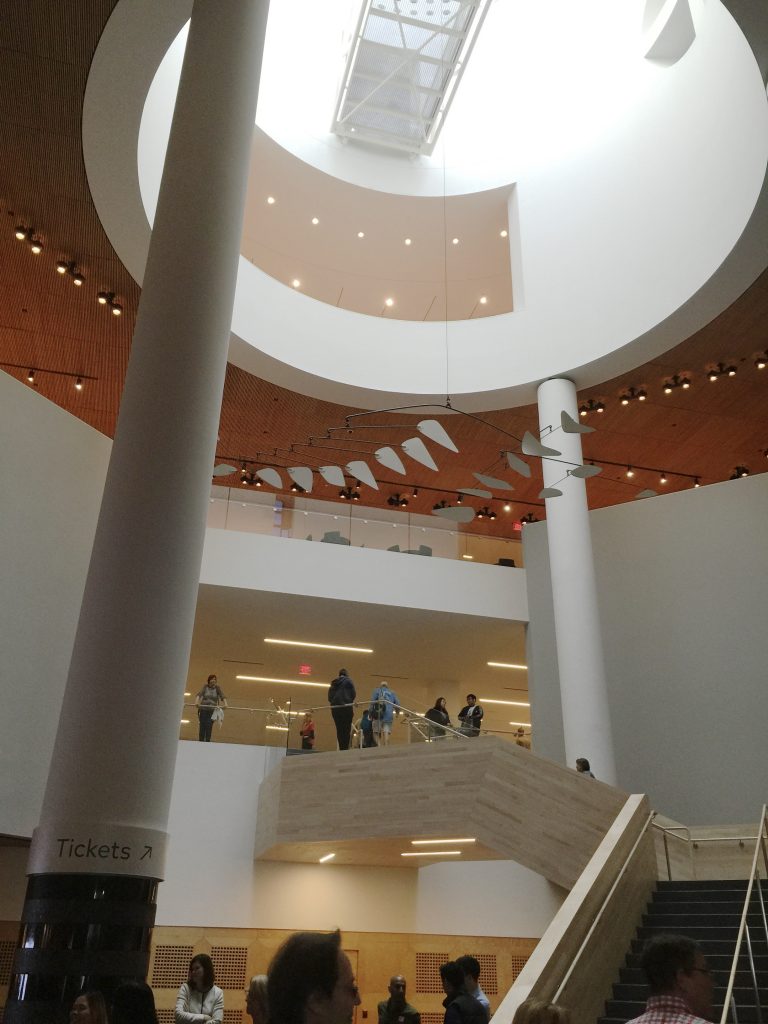
For years, the Presidio was a huge section of the city off limits because it was an active army base. Eventually, the army decommissioned the base and it became the property of the city and the nation. It is 2.4 square miles in size (1664 acres) so it’s like adding one and a half Golden Gate Parks to the city for recreation and entertainment.
It also has one of the best views of the Golden Gate Bridge you can get.
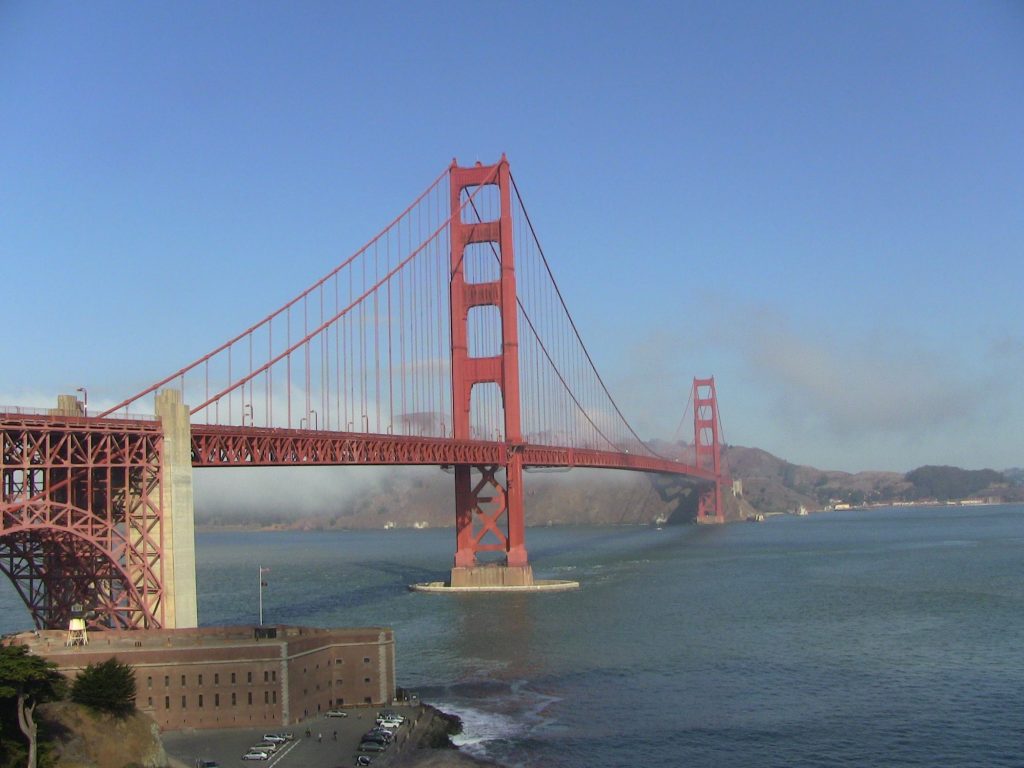
I’ve only recently started to explore the Presidio. Since Dad was in the military and we were at several army bases – Fort Bragg, Fort Rucker, Fort Benning, and Aberdeen Proving Grounds – I have a thing for army bases. A lot of the old military structures are still around (and one barracks has been turned into restaurants). The real problem with the Presidio is that you have to make several Muni transfers to get to the base. It’s only now being fully developed by the city and state and a large part of it is still National Park Service property. There are several hiking trails I want to explore on my next visit to the city.
Like Tony Bennett says, “I left my heart in San Francisco!”
Click here to see a video of my favorite city!

What an interesting description with great photographs. I feel as if I’ve just been to San Francisco. You really did a great job describing the city.